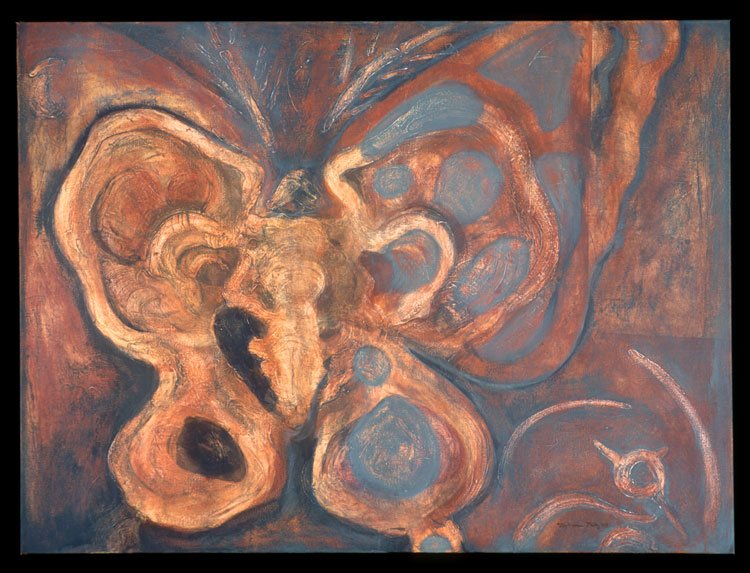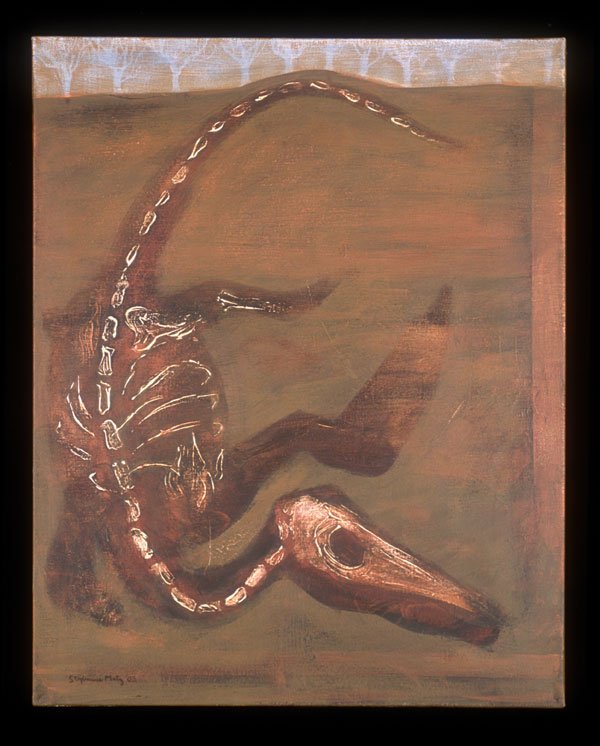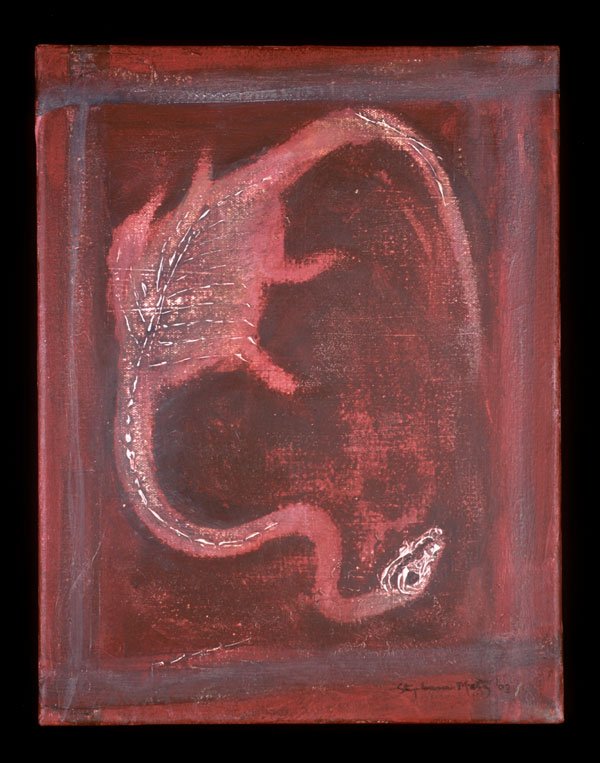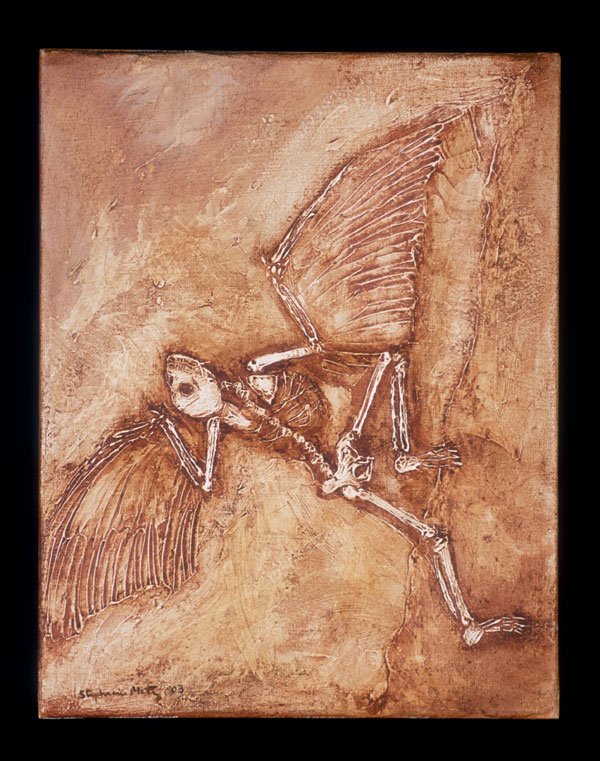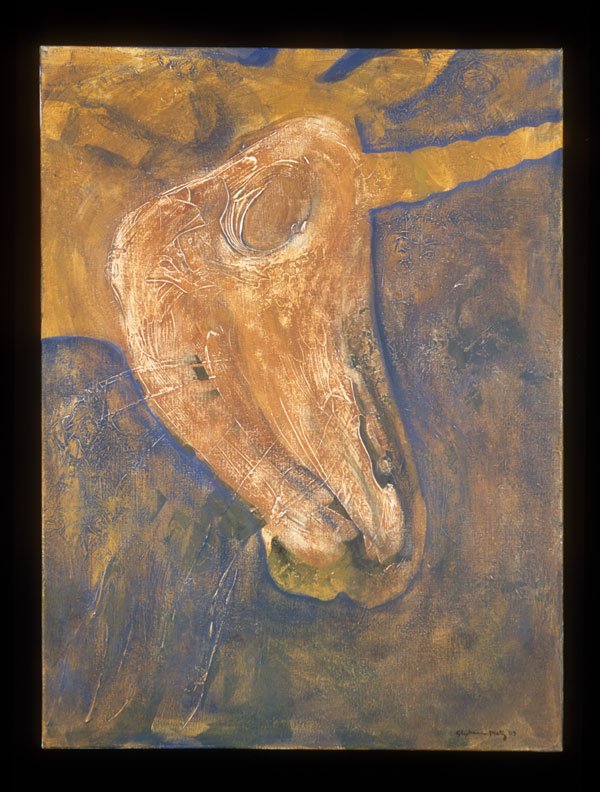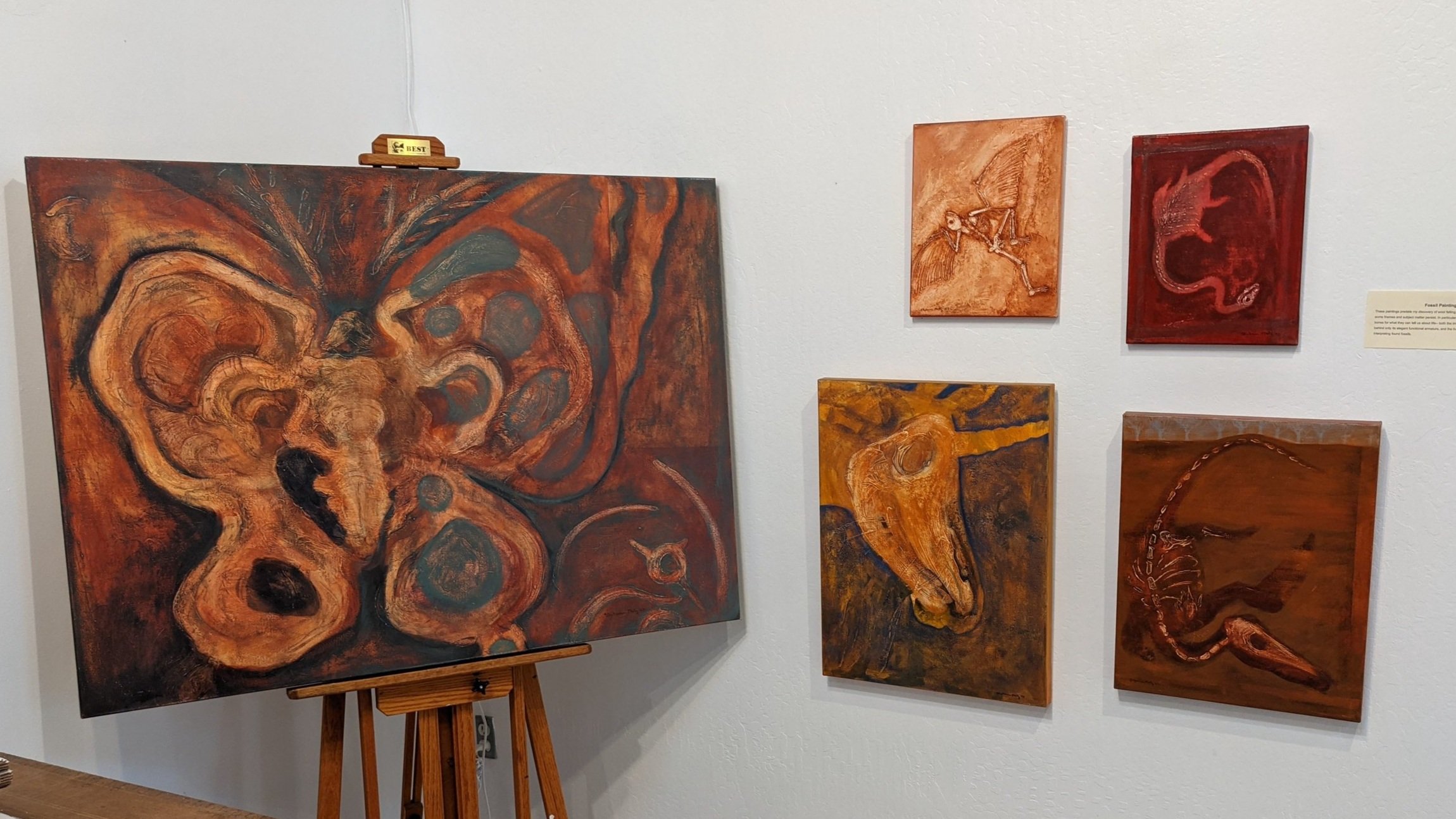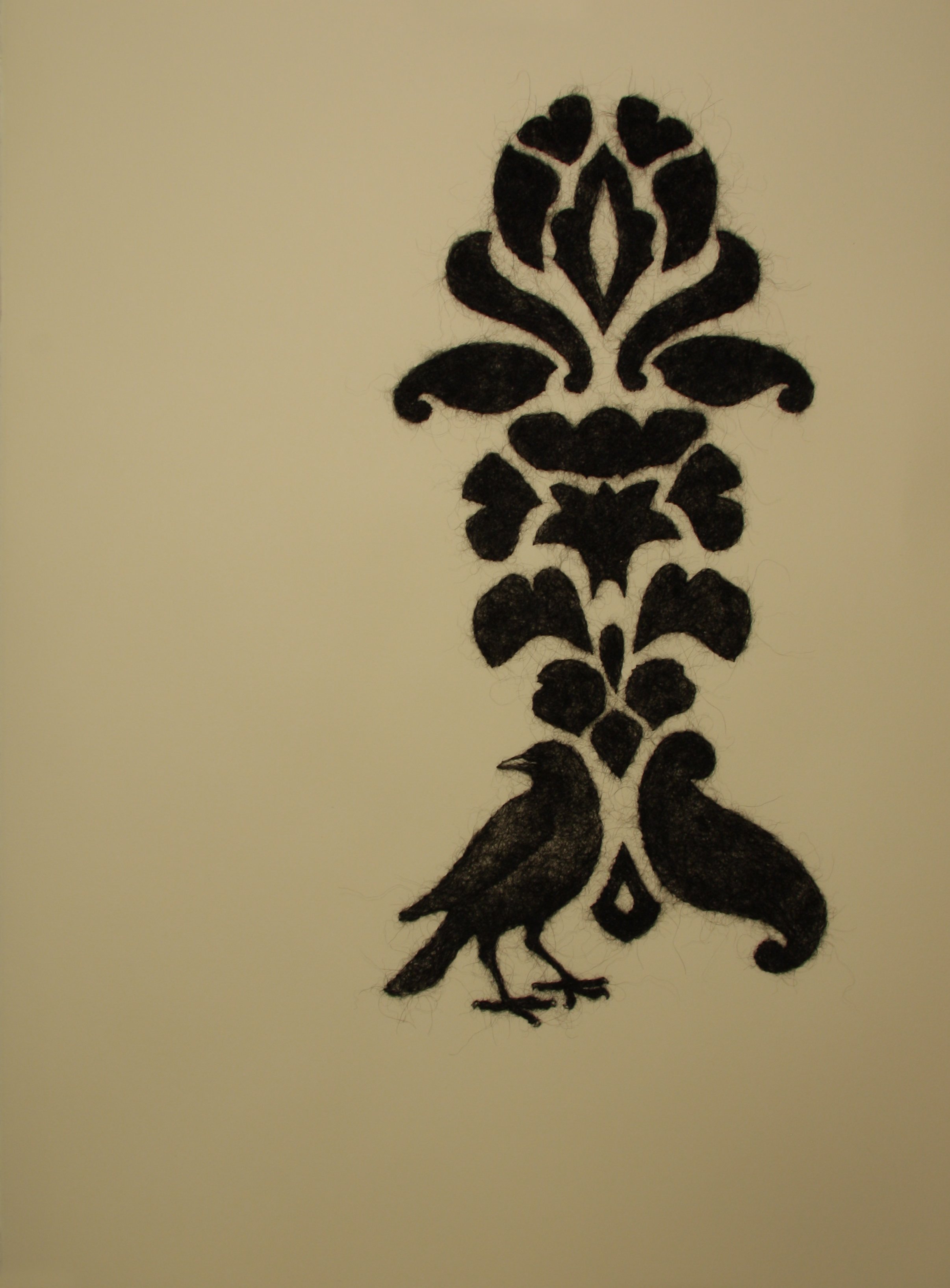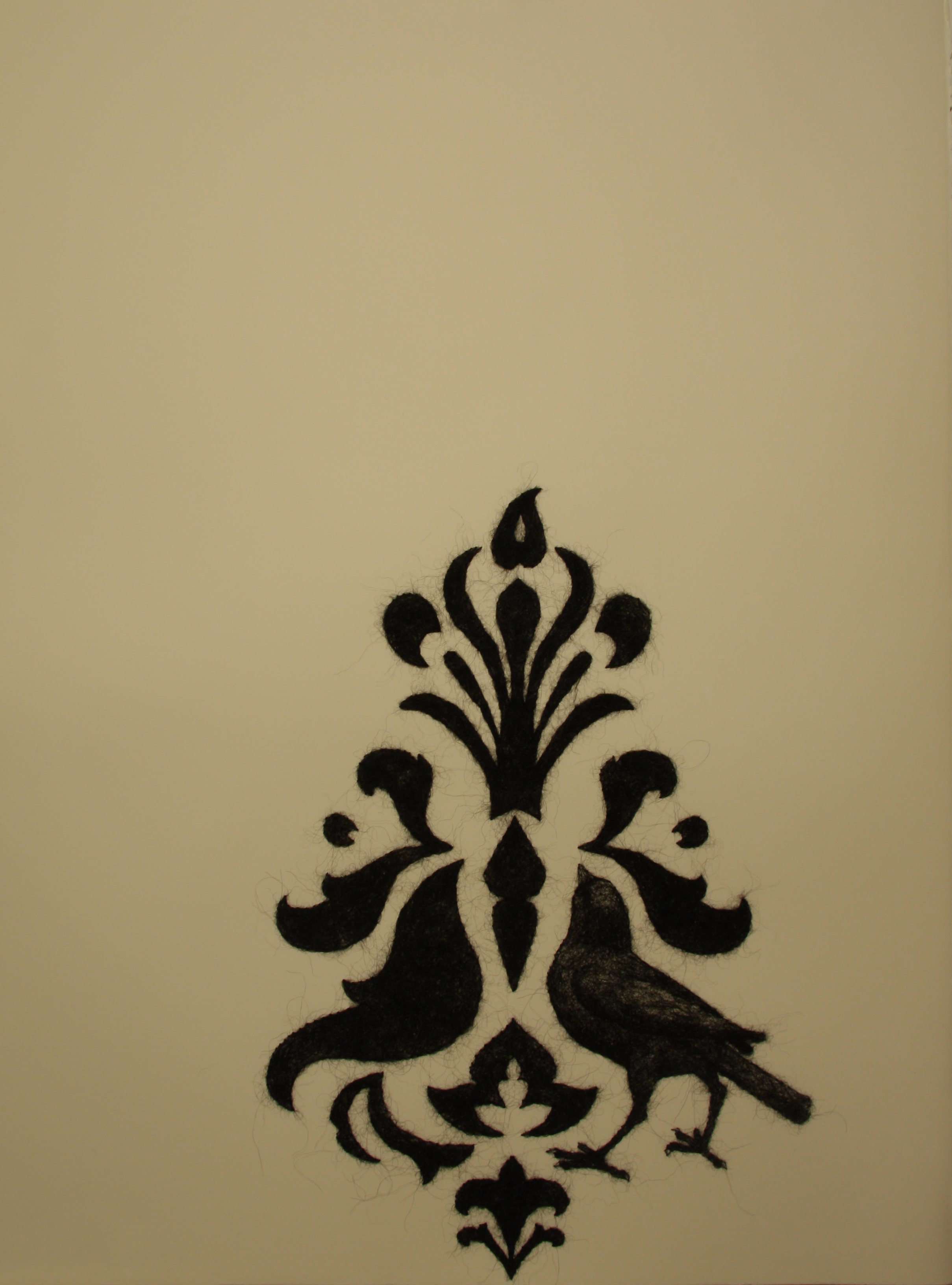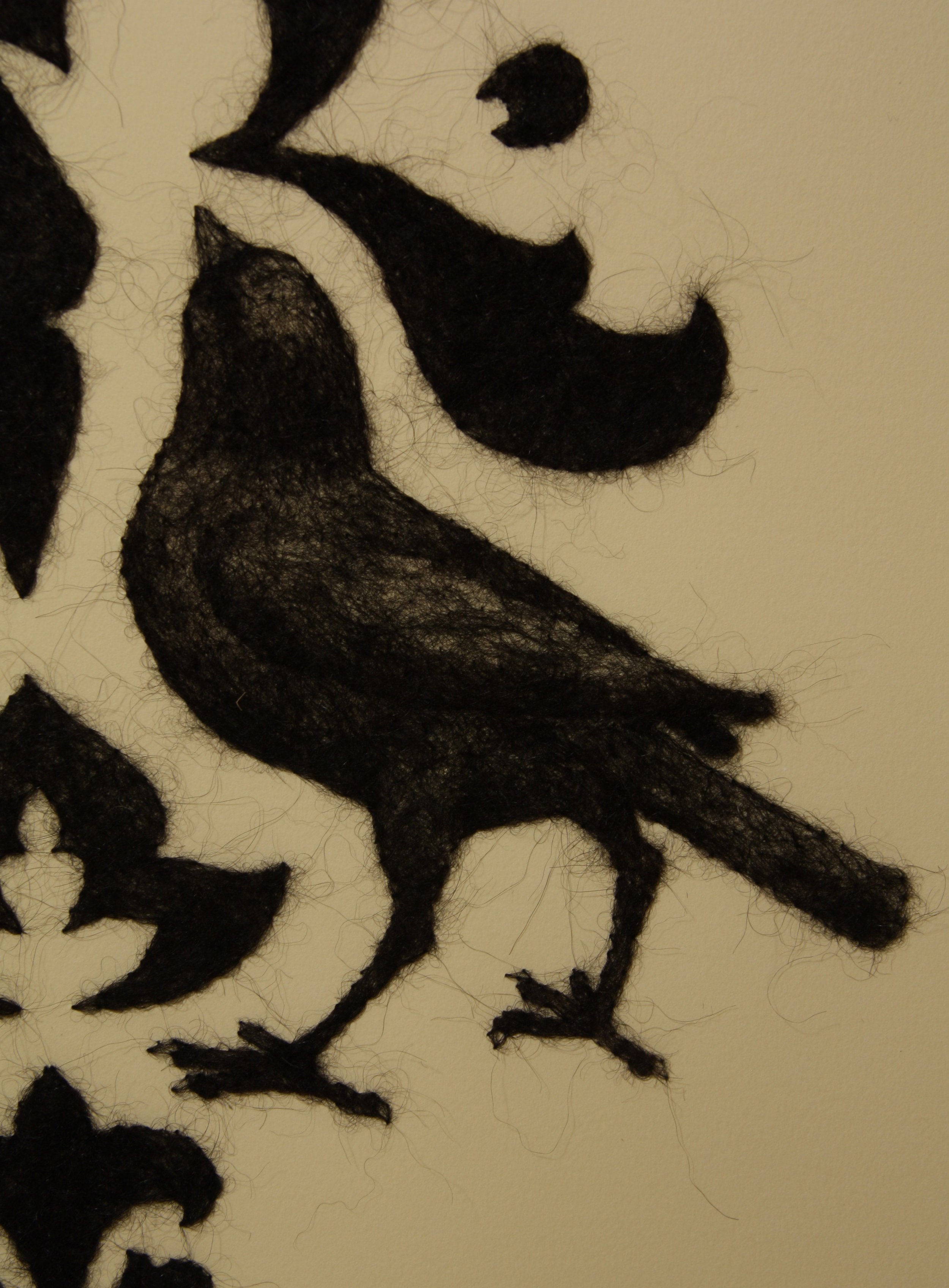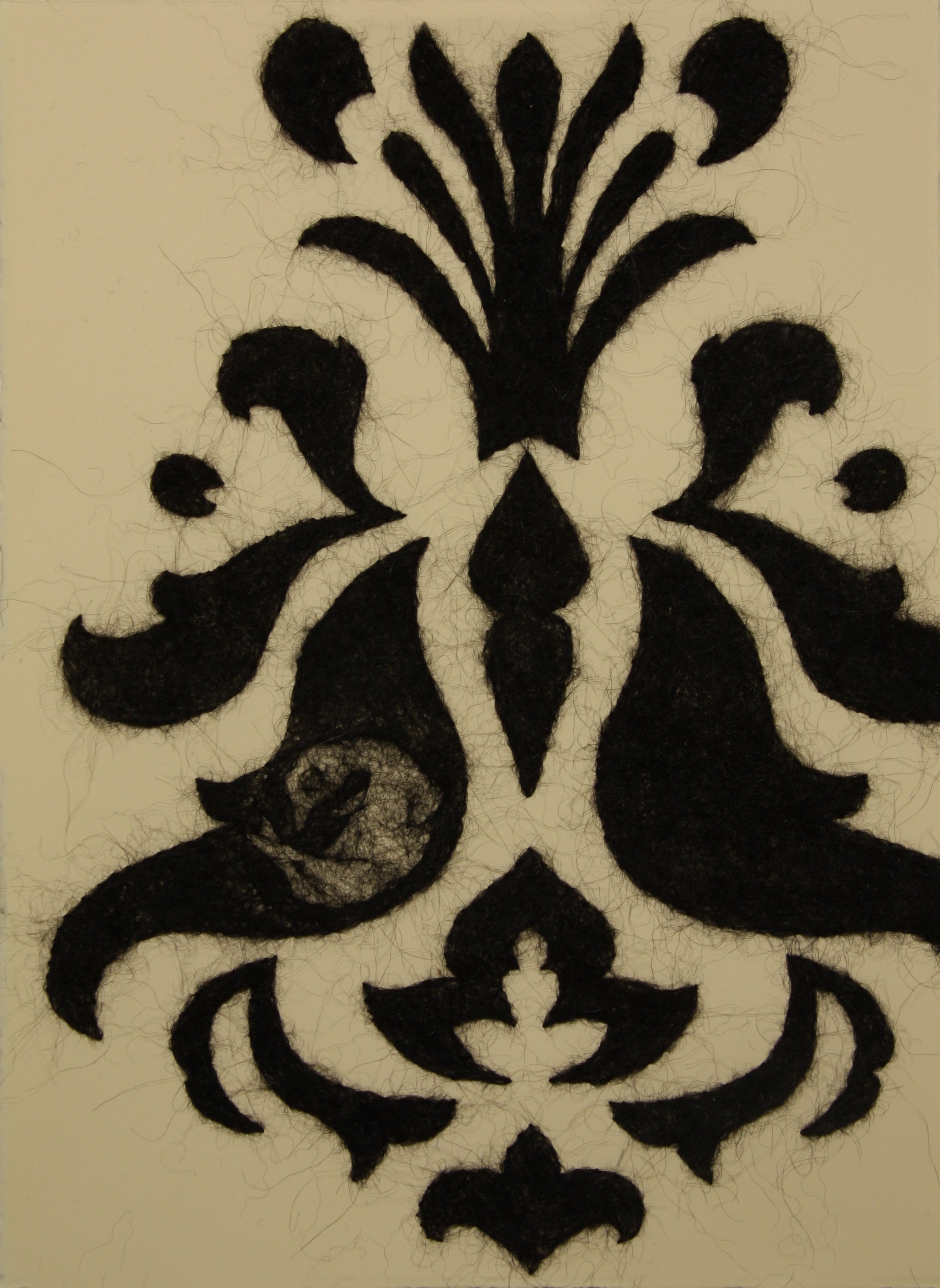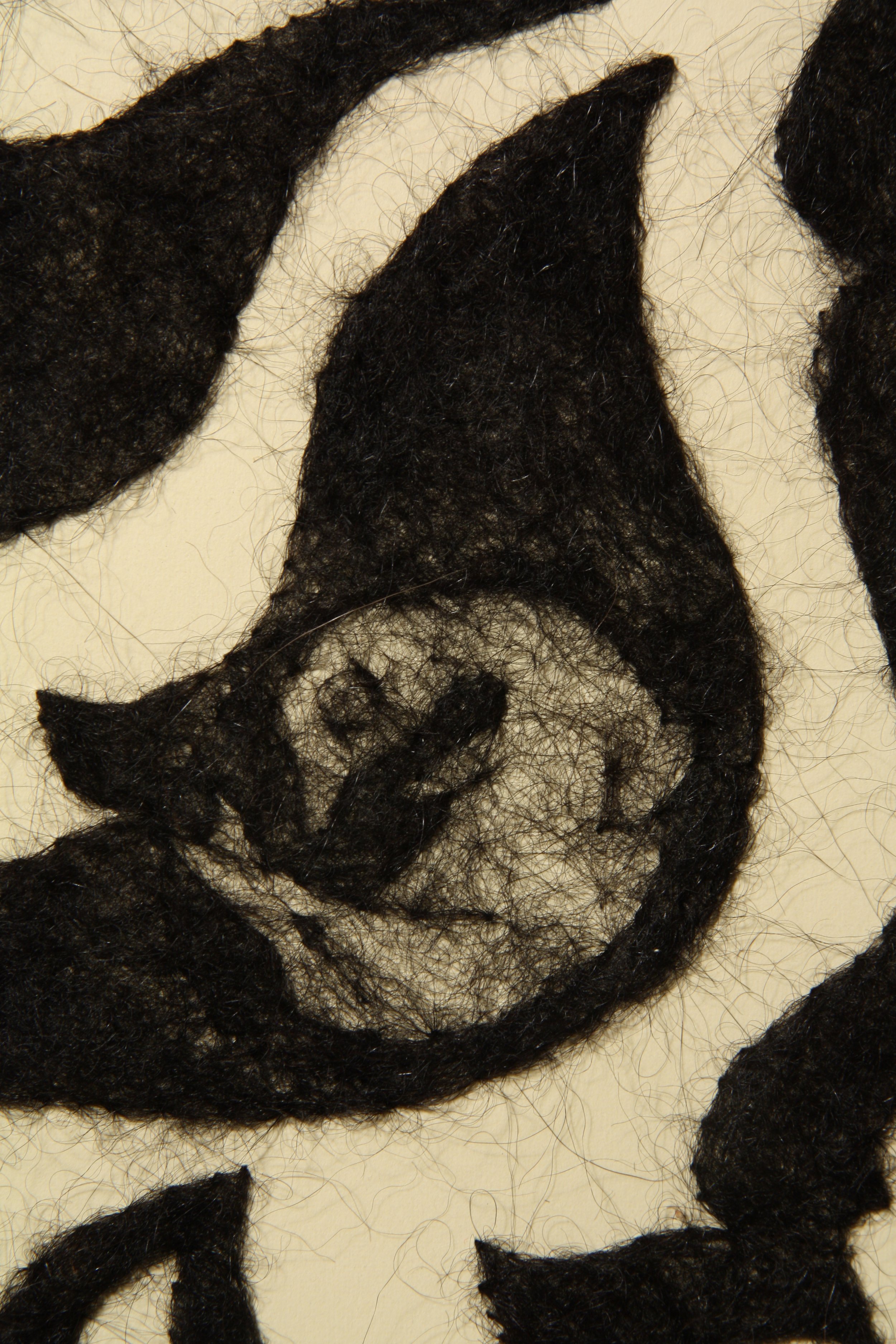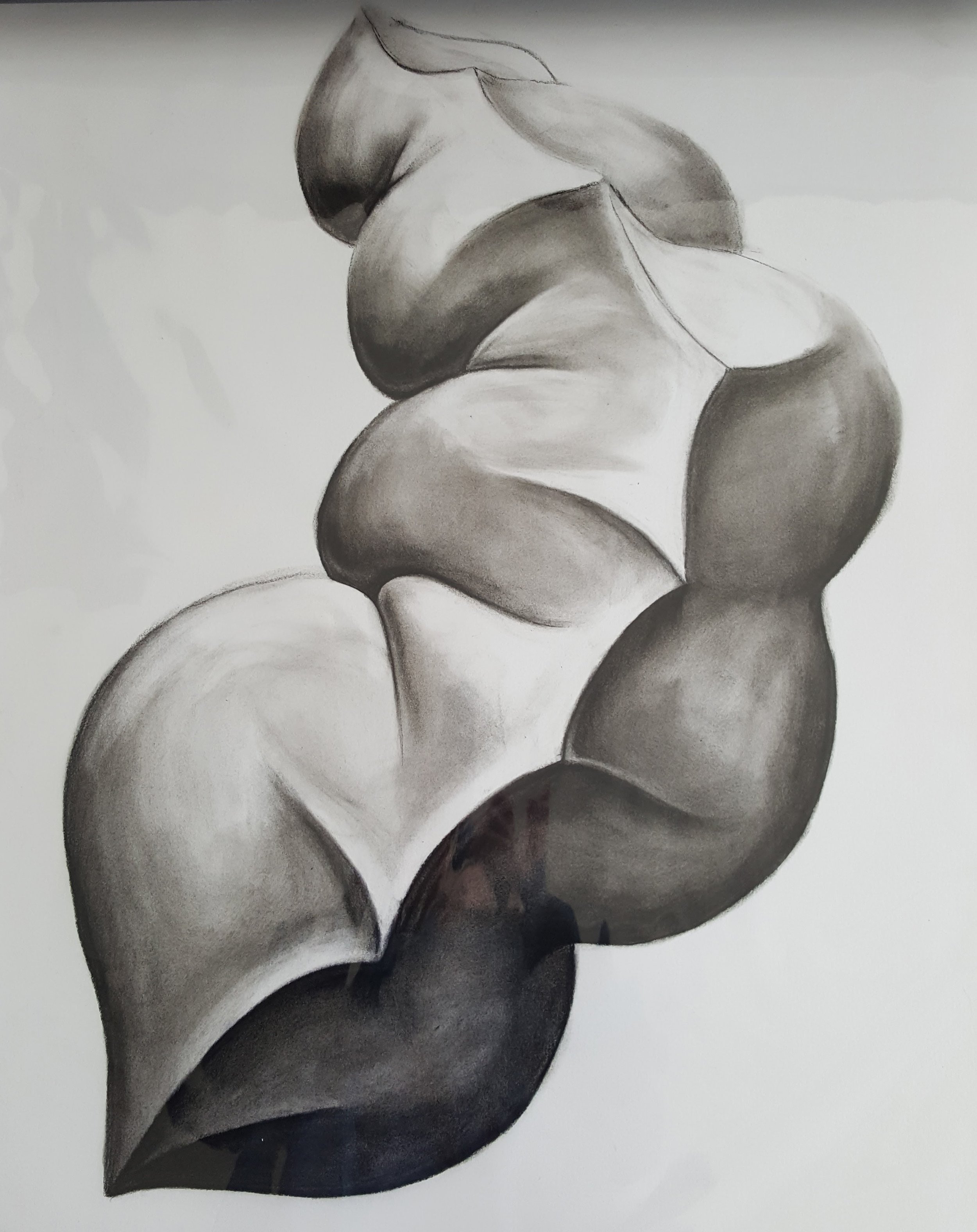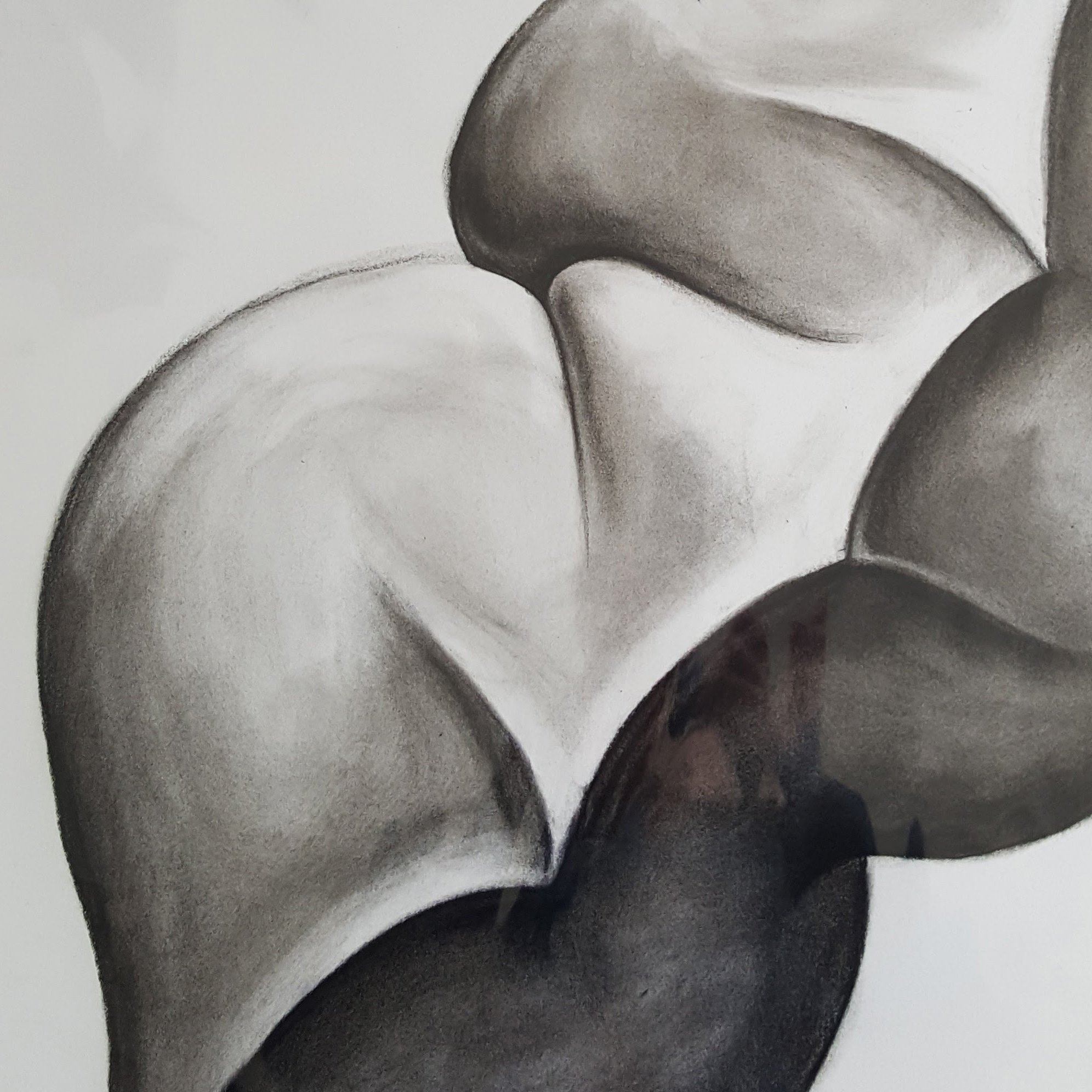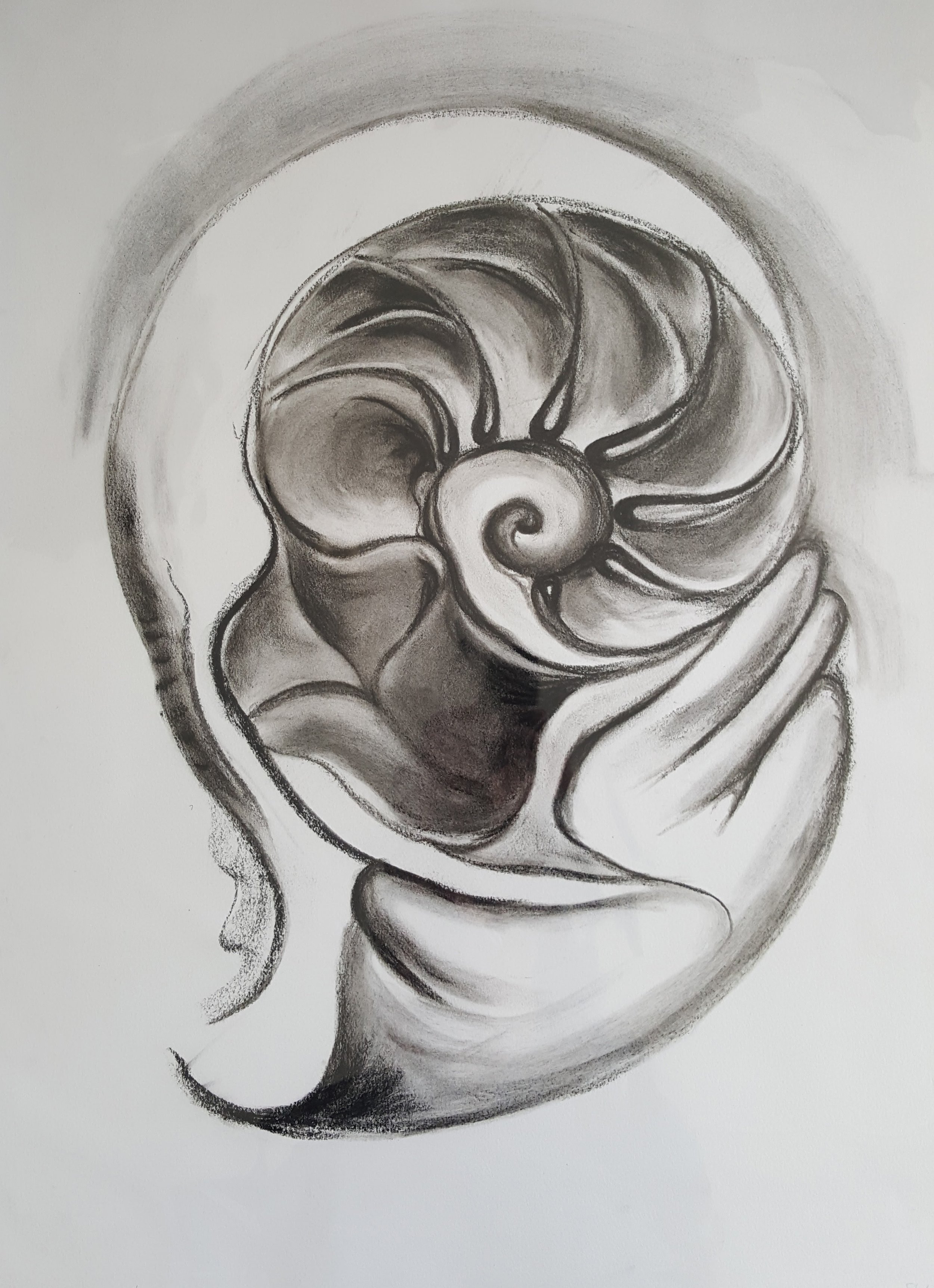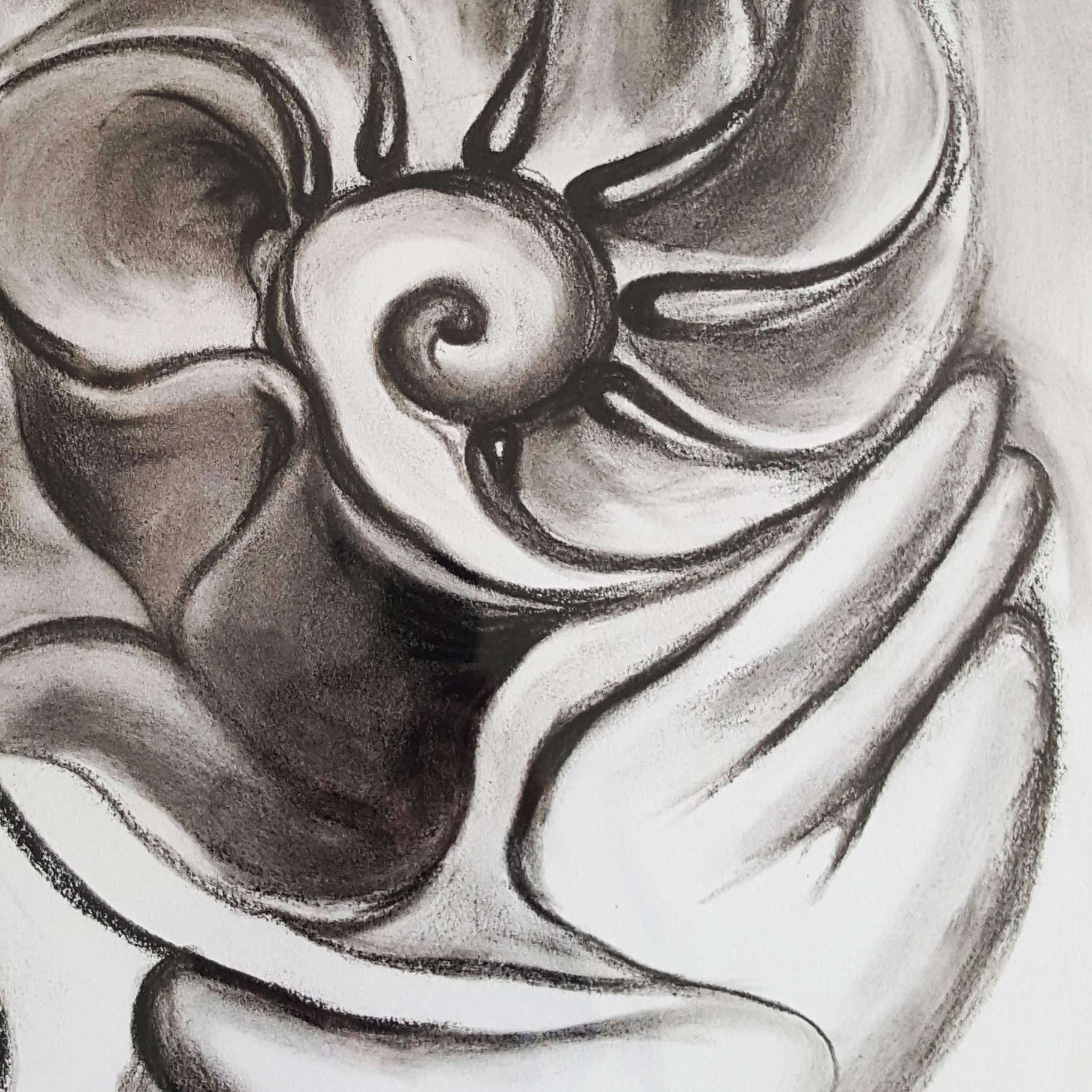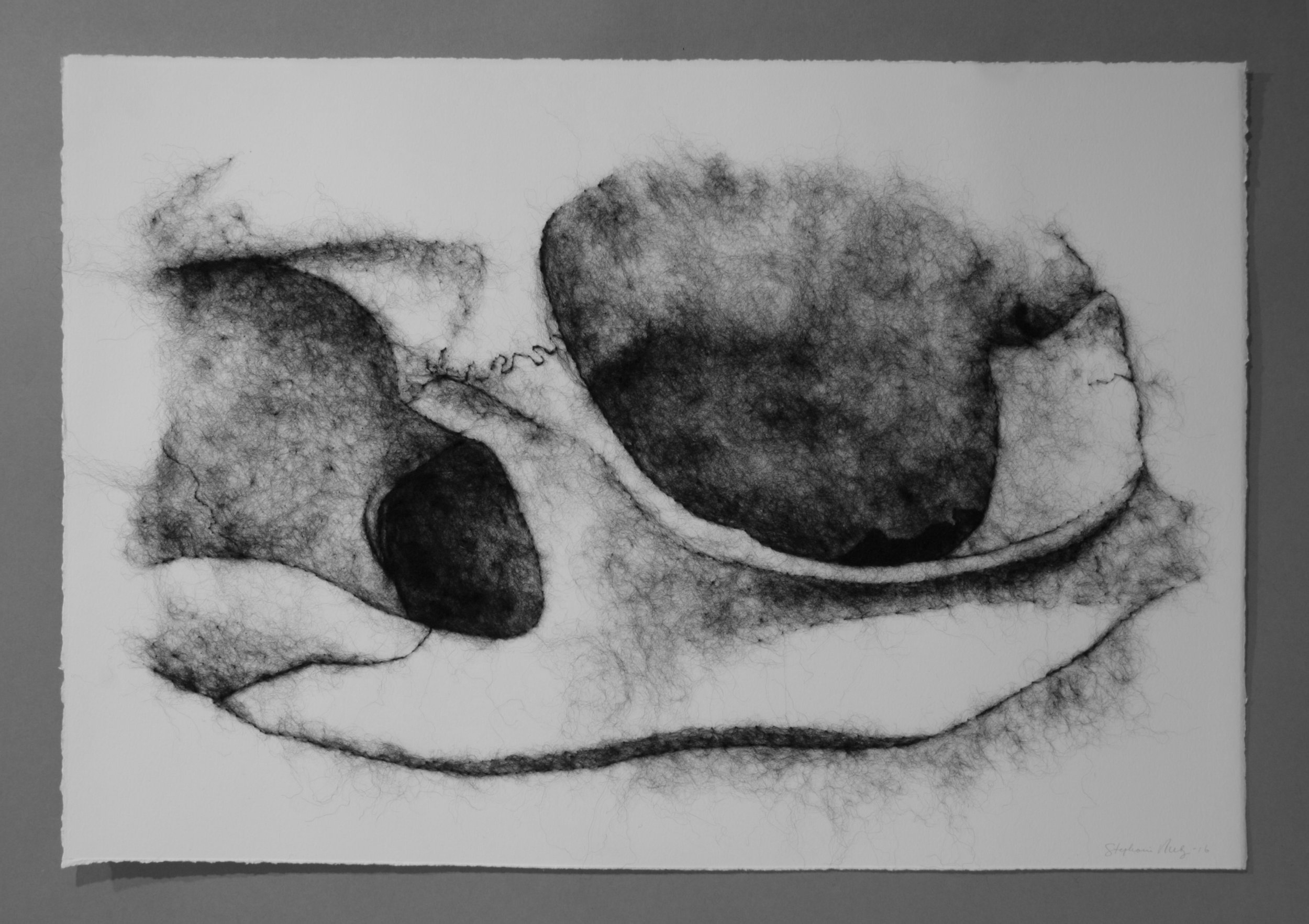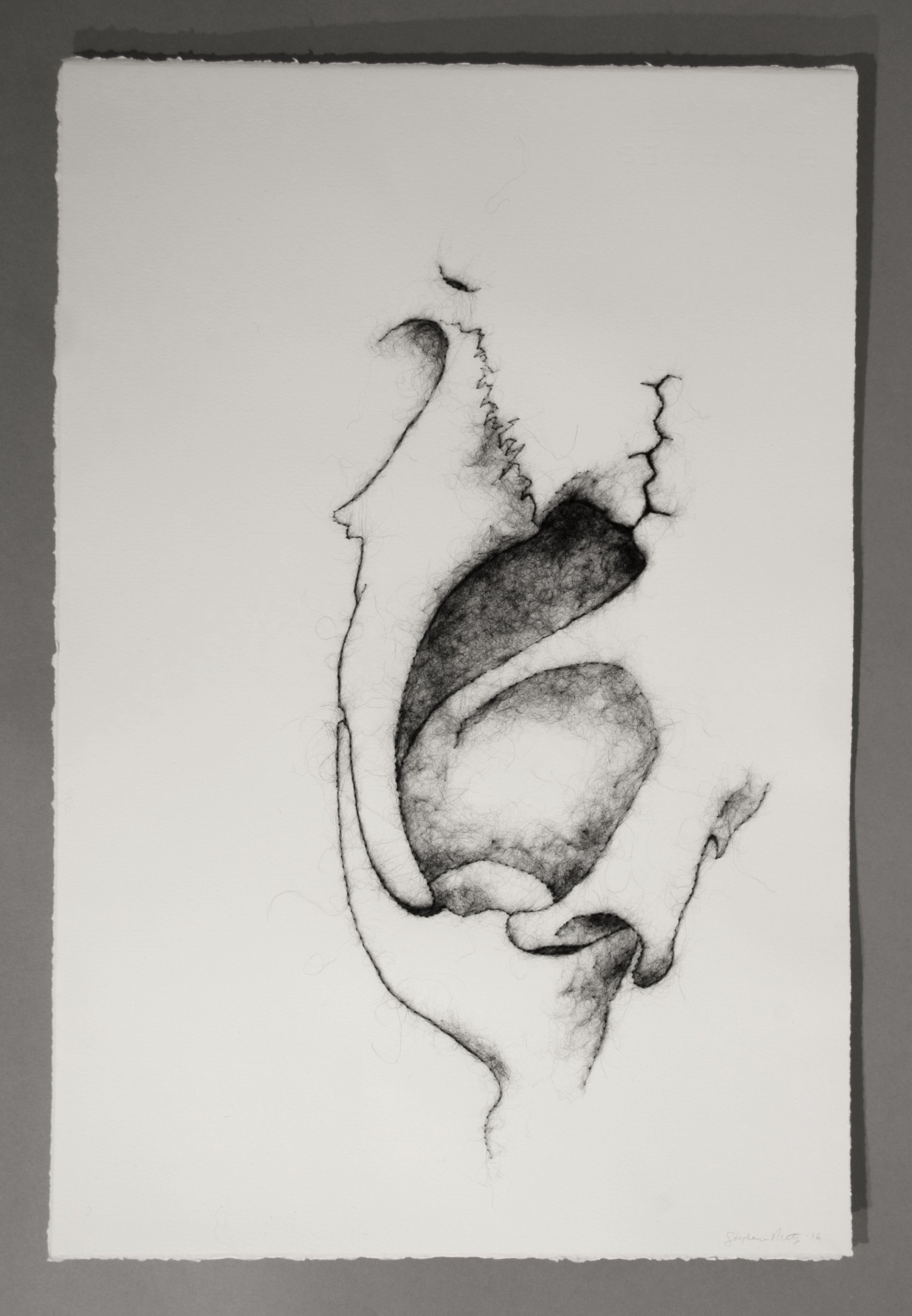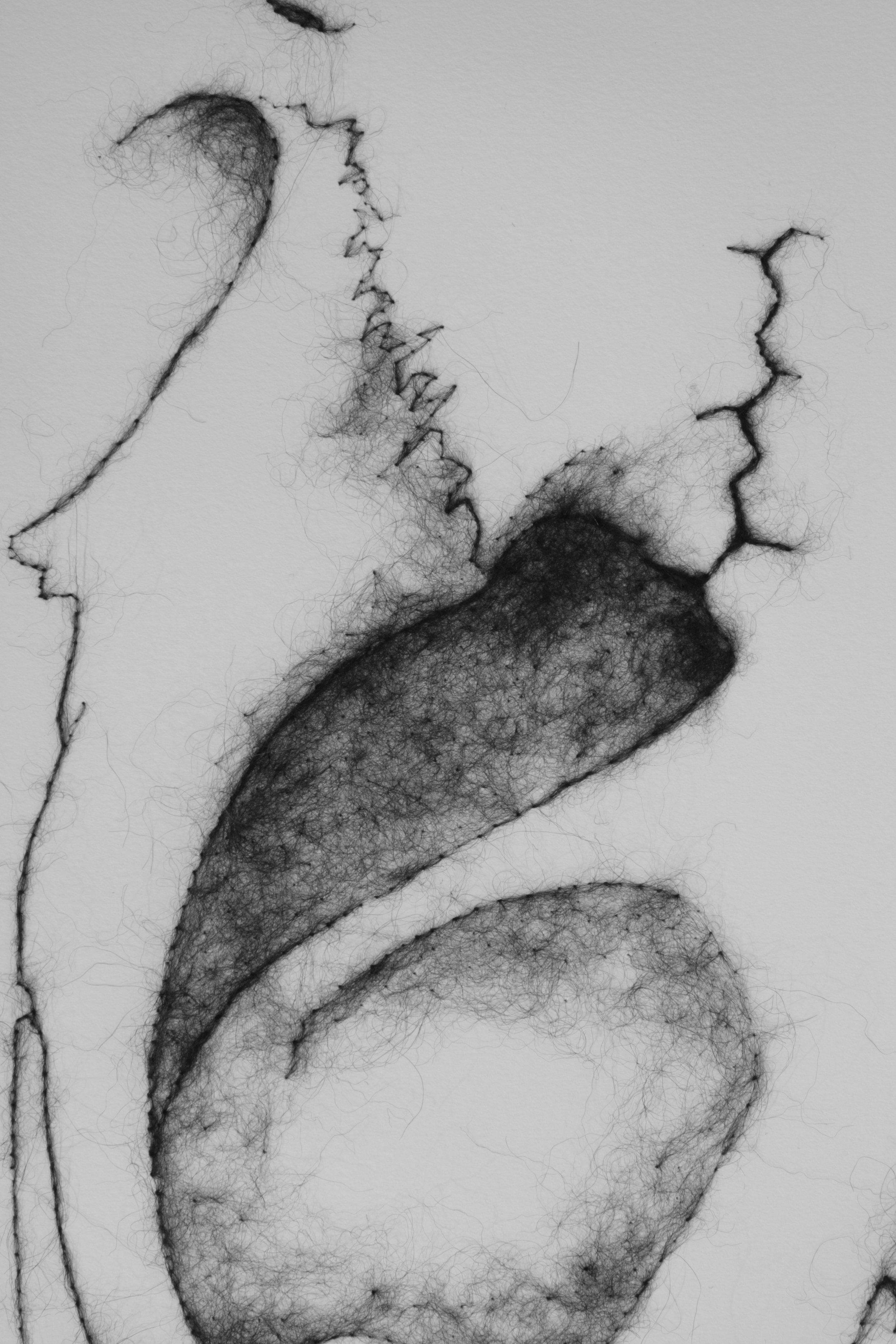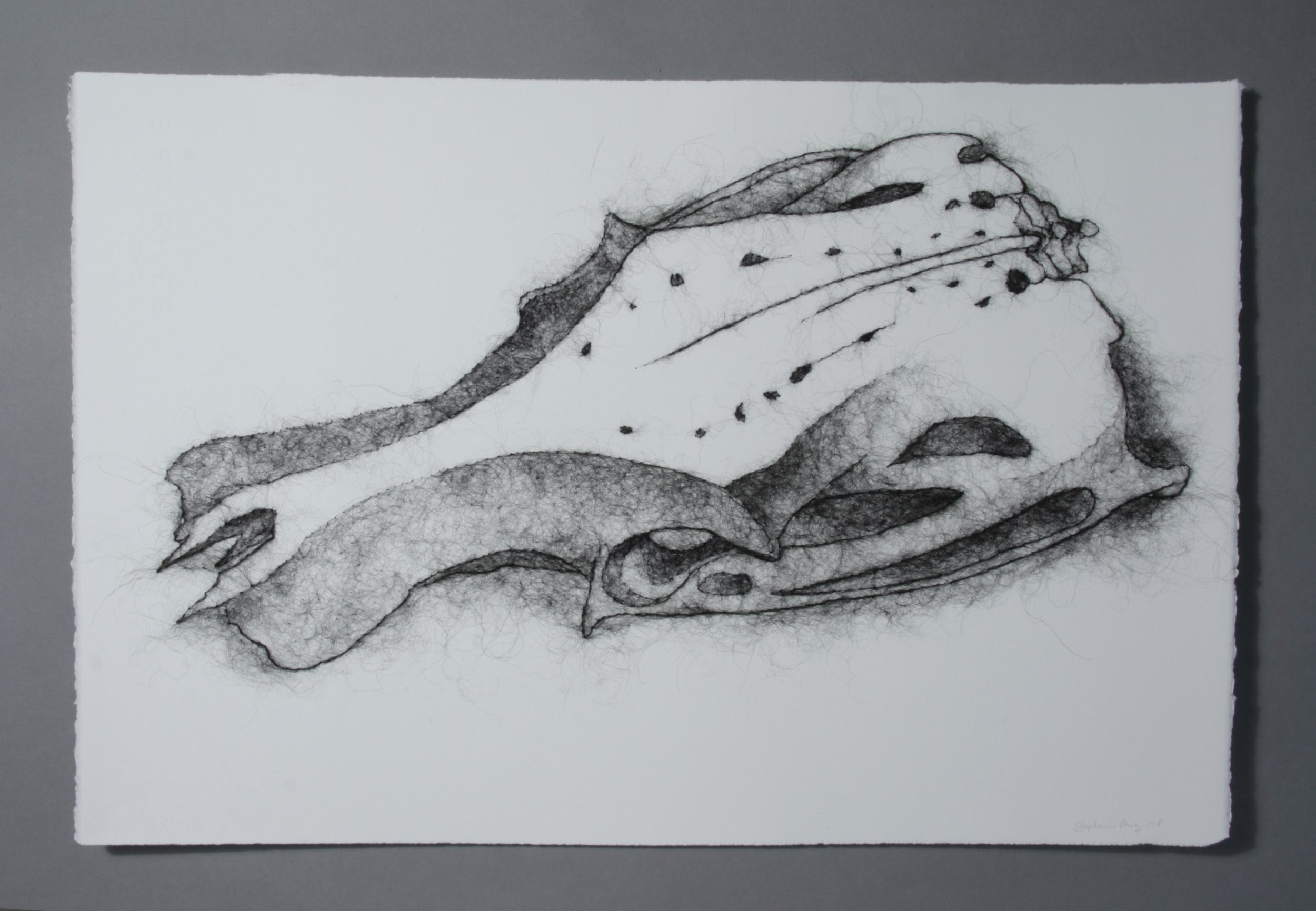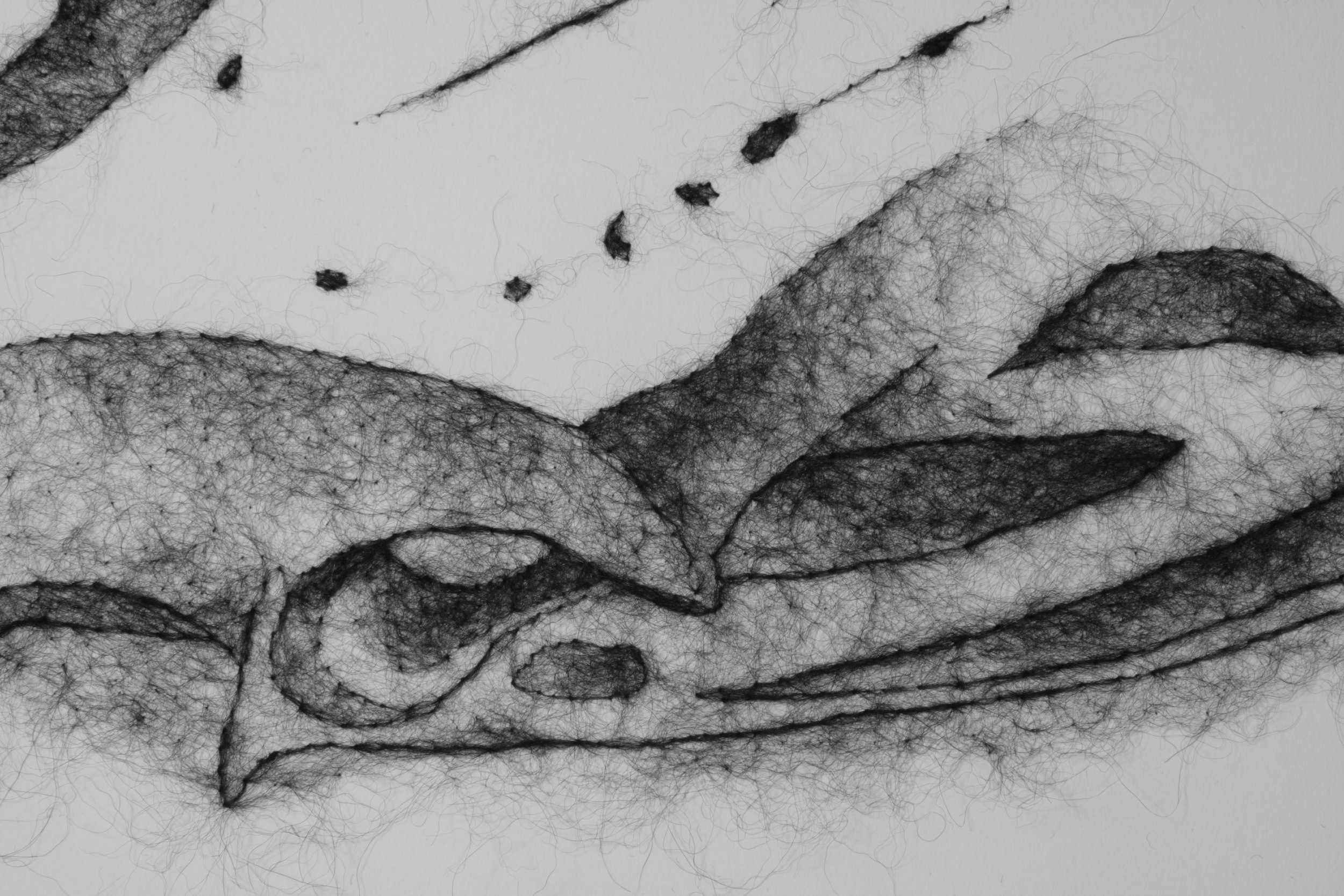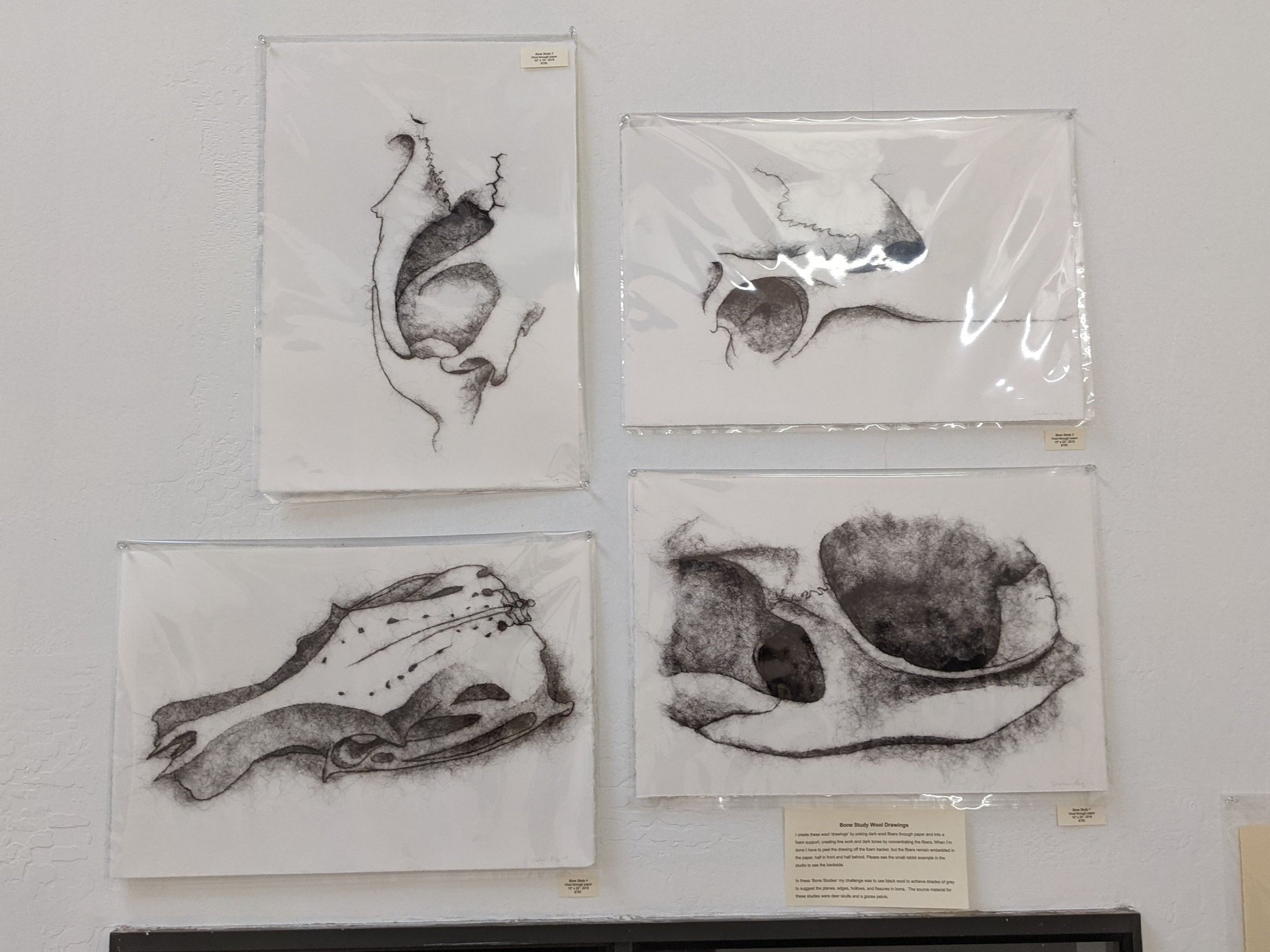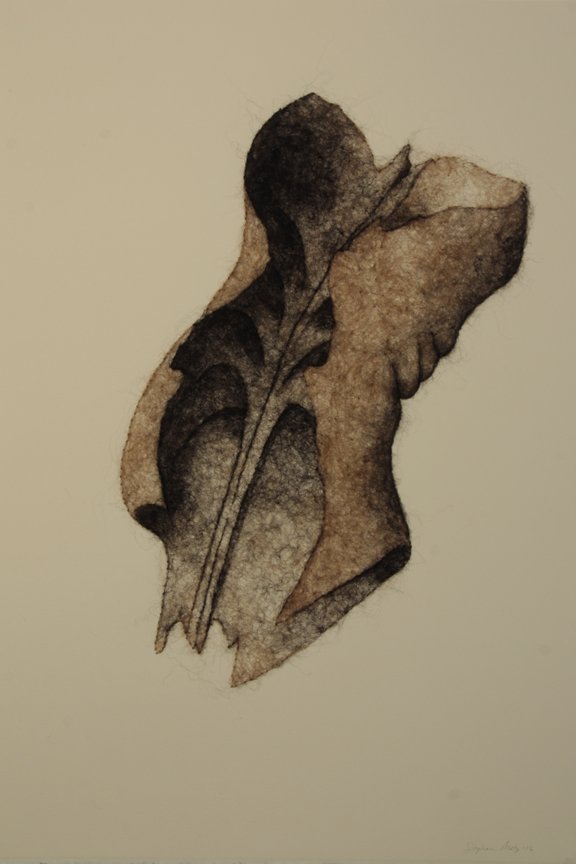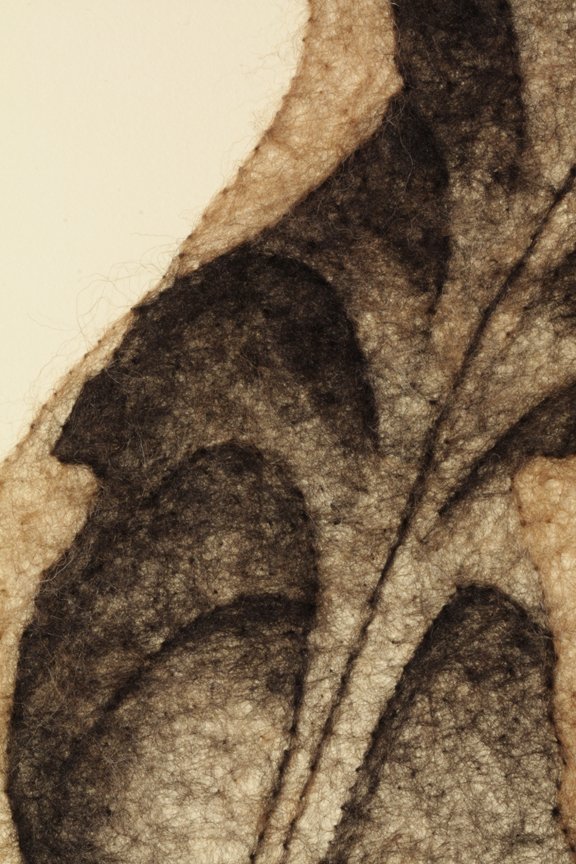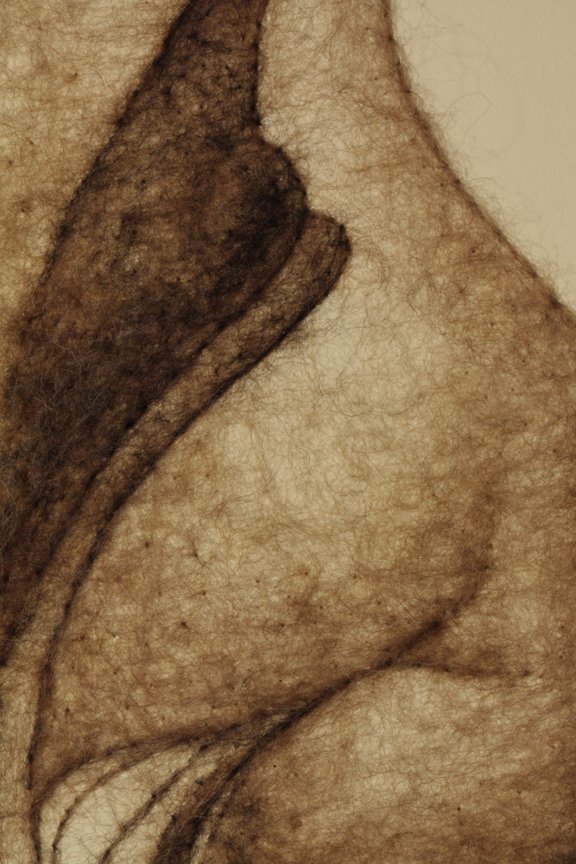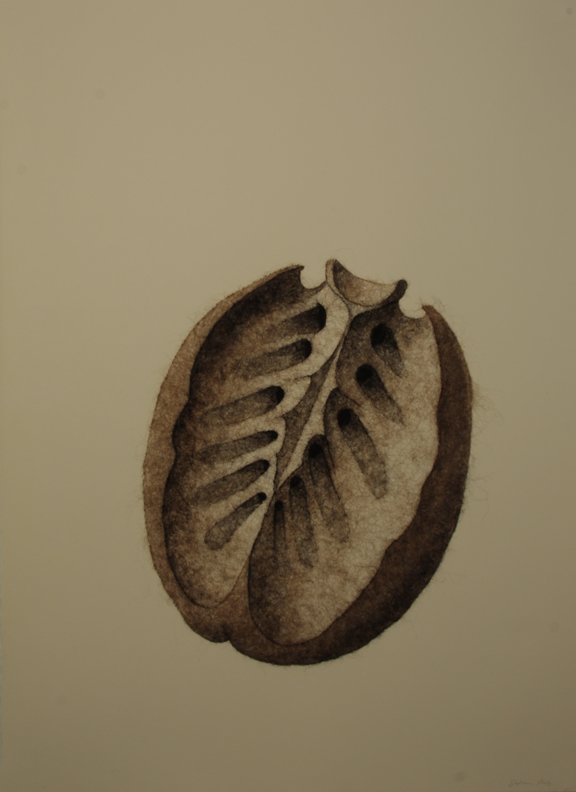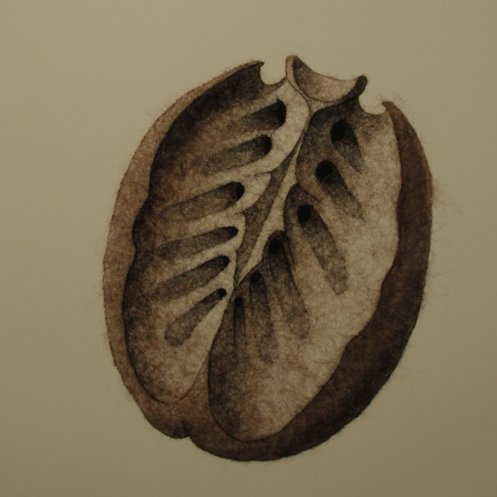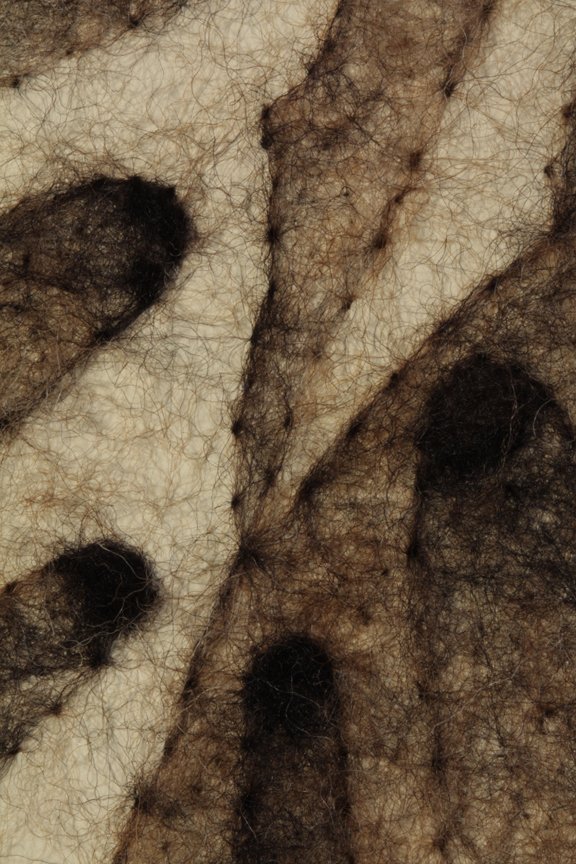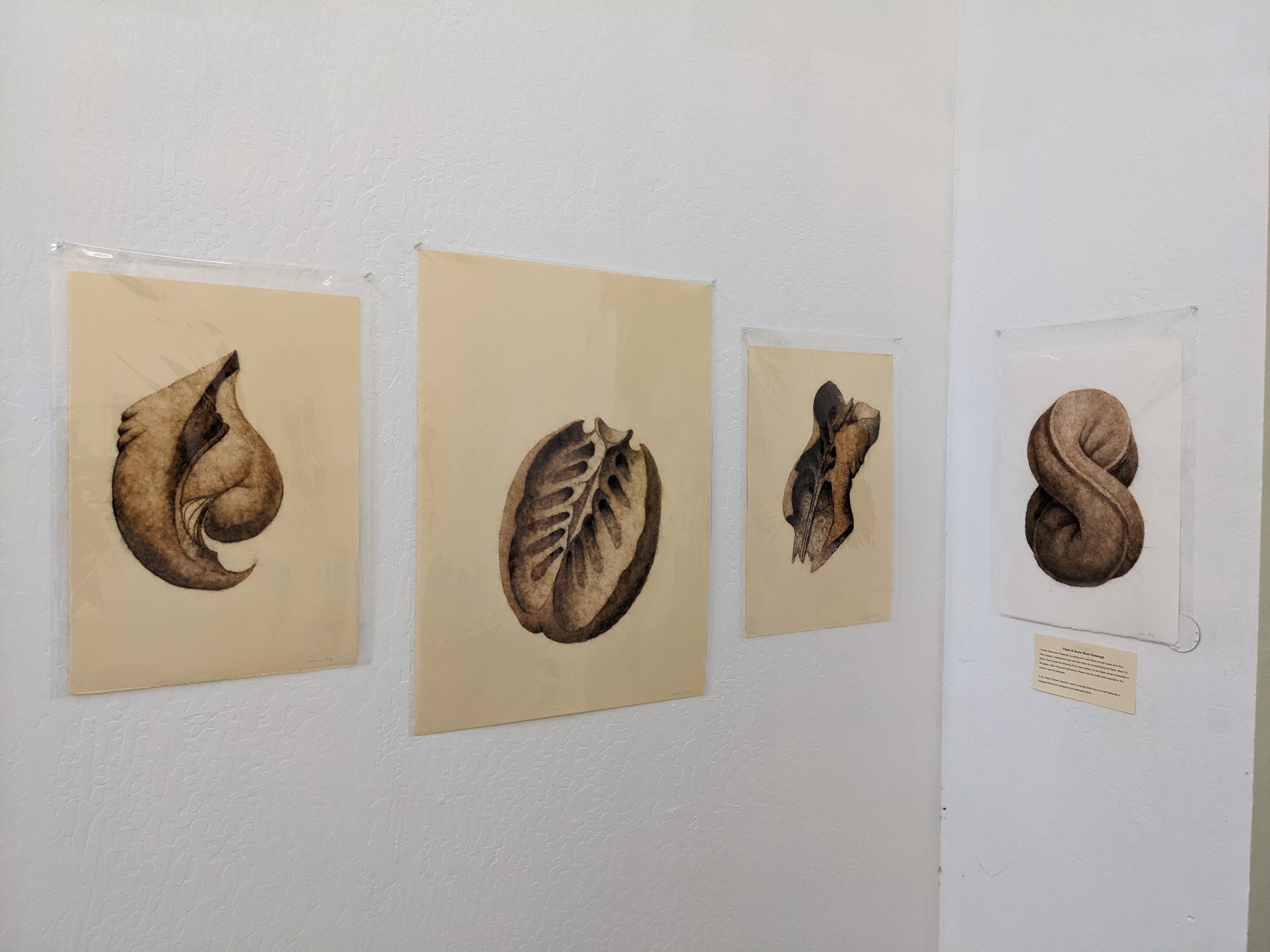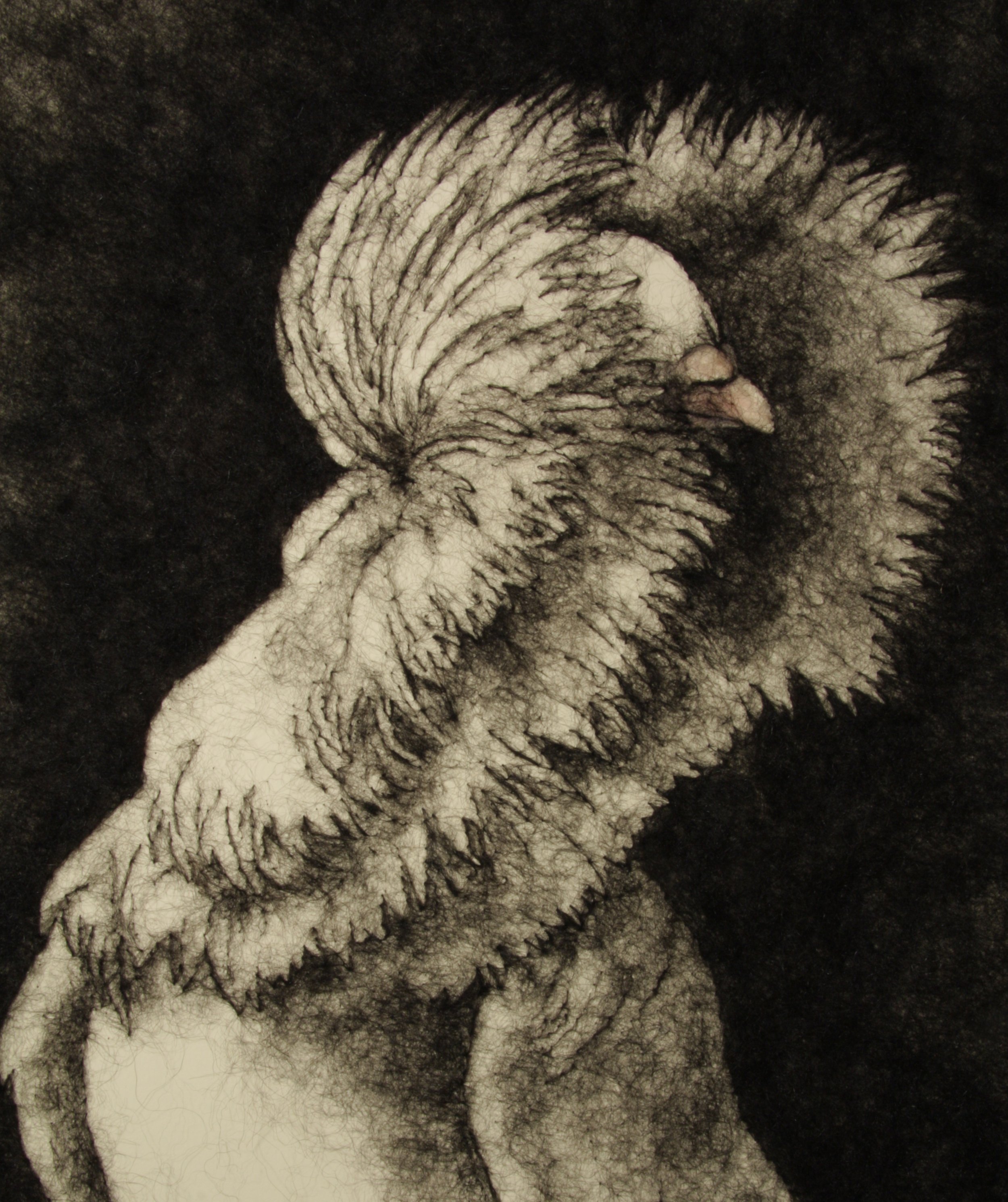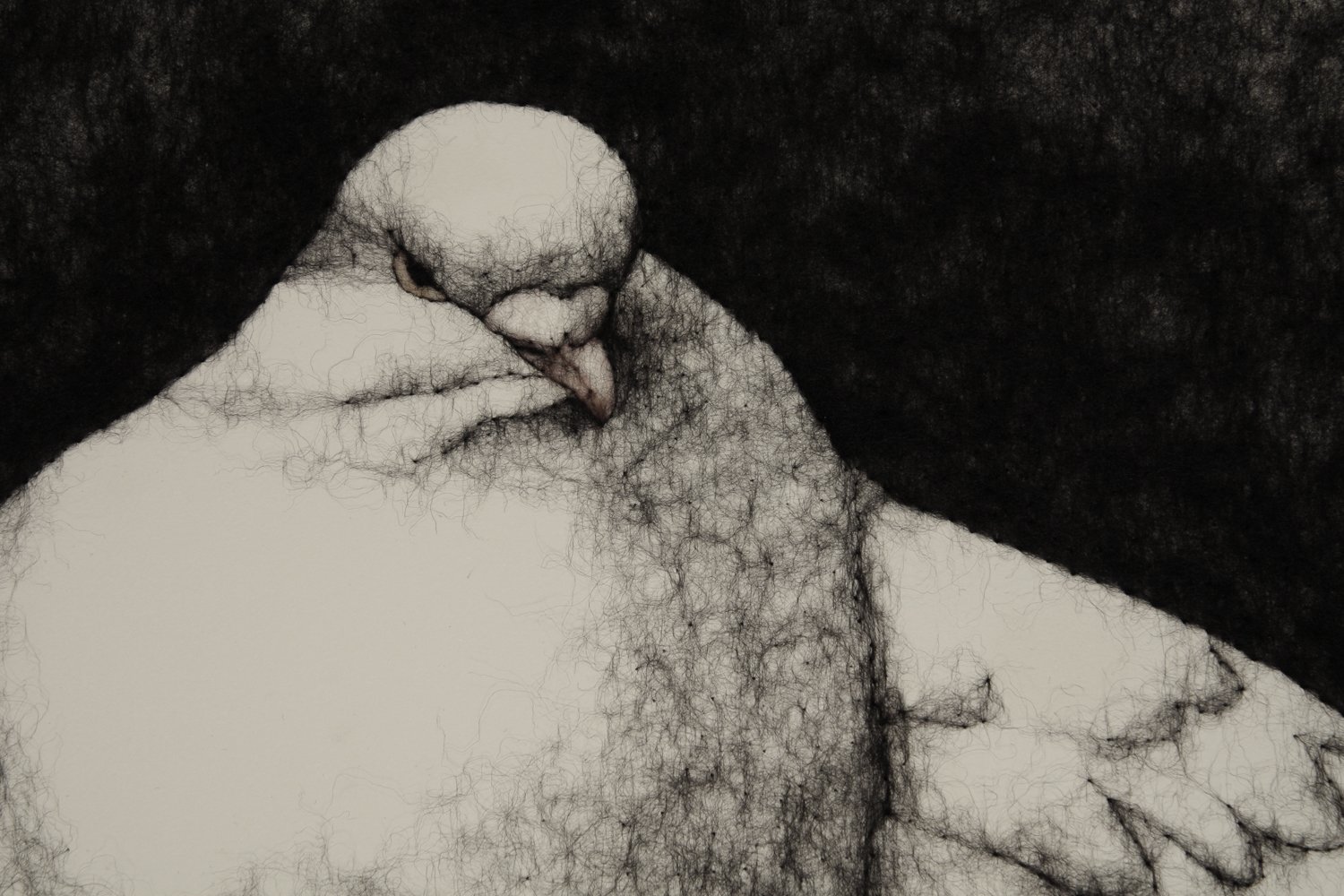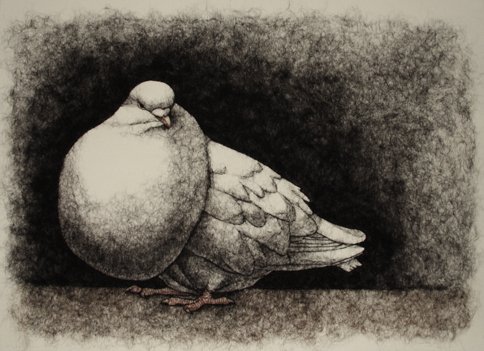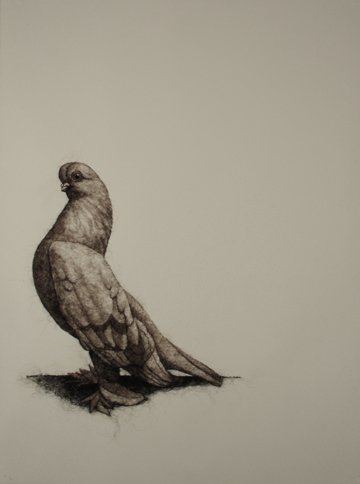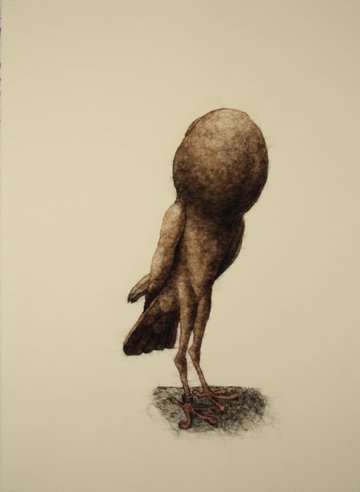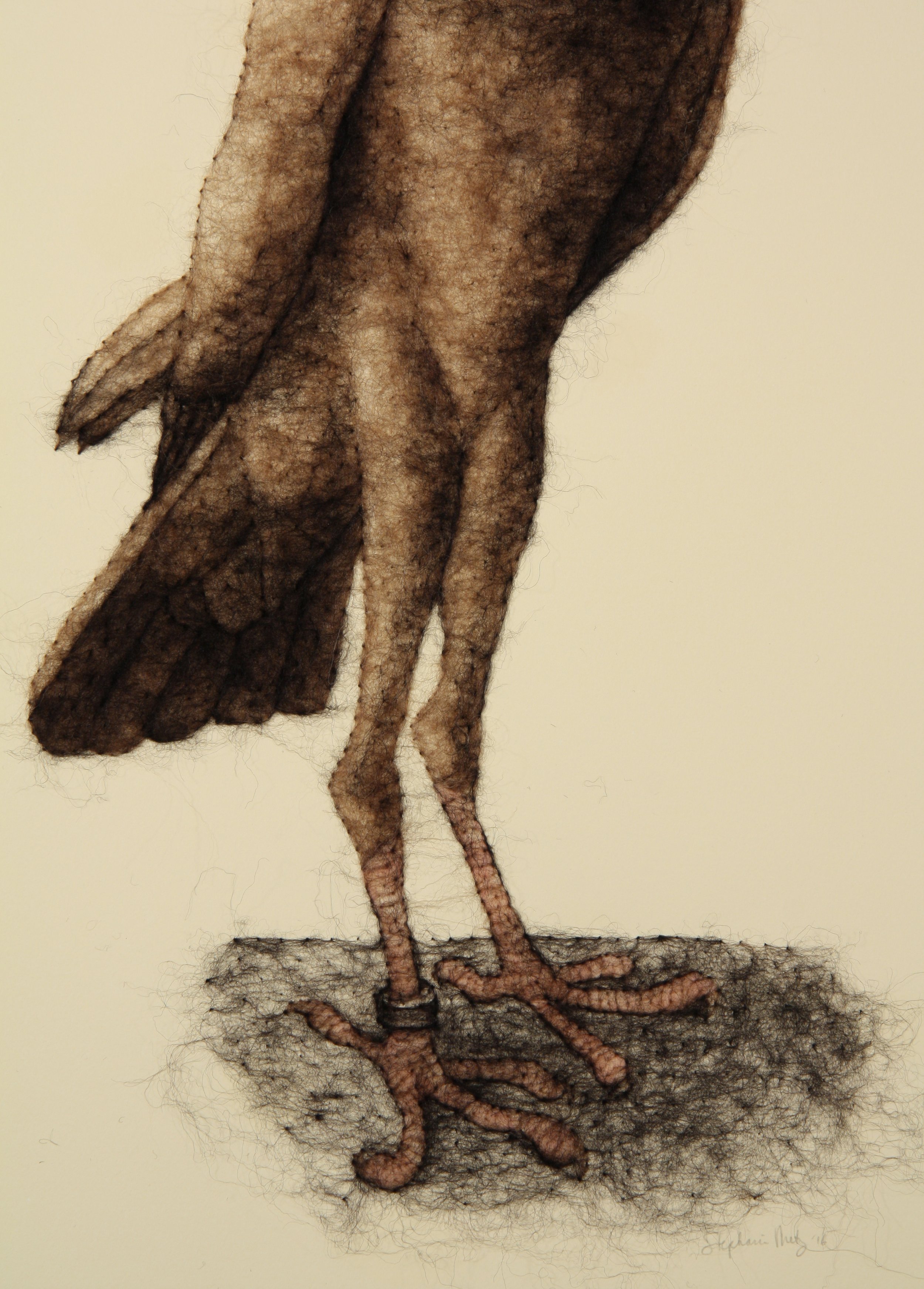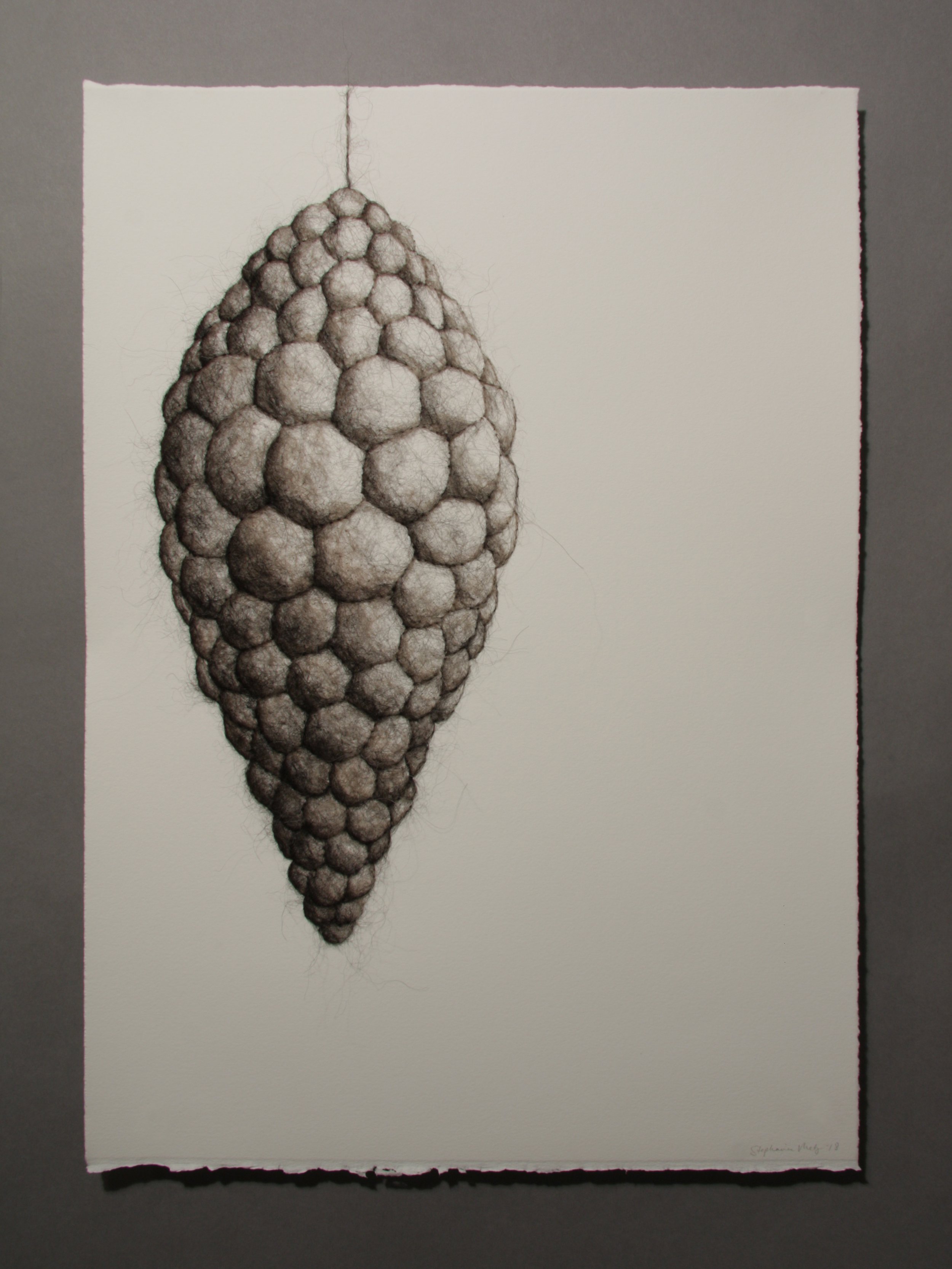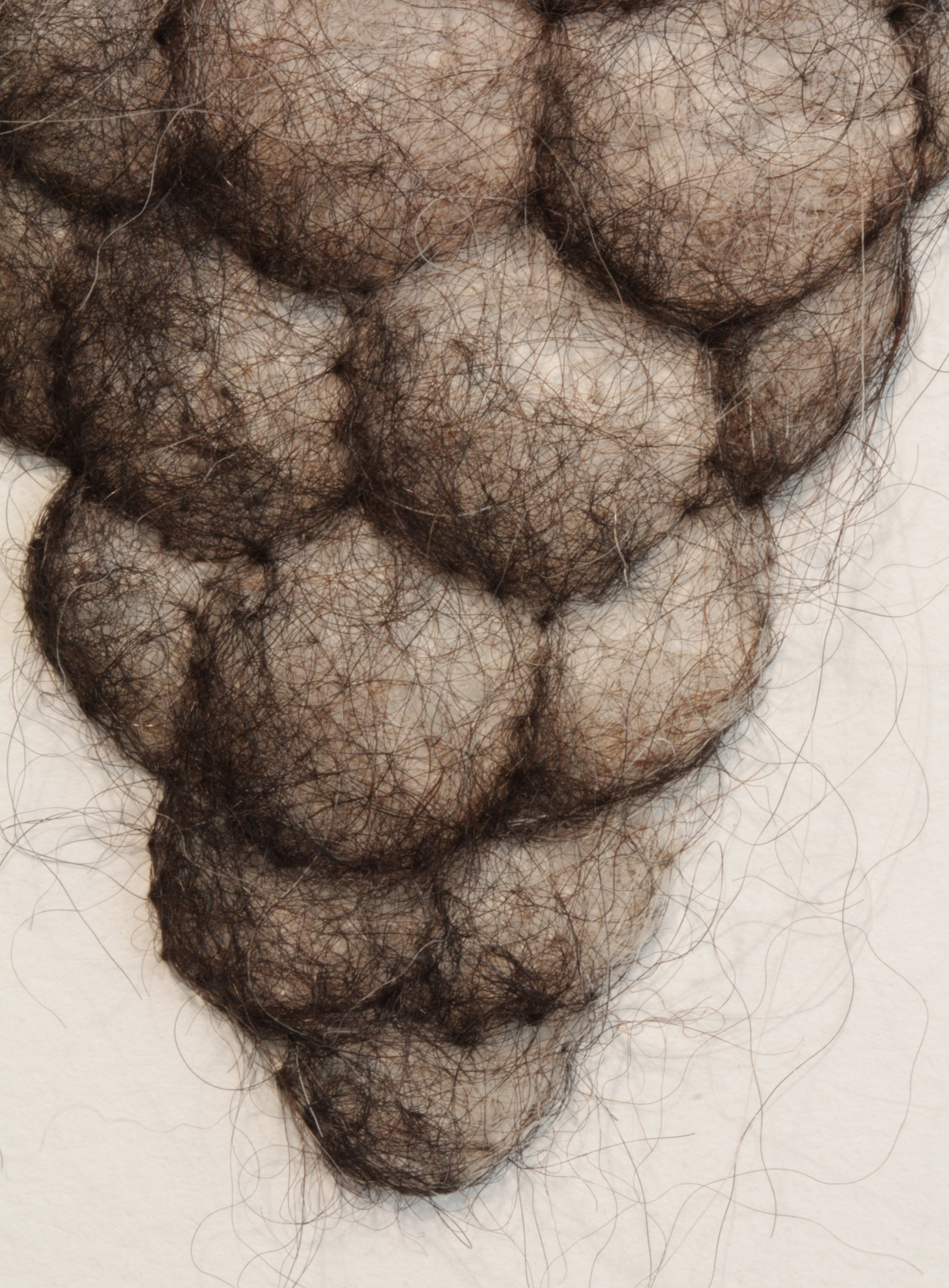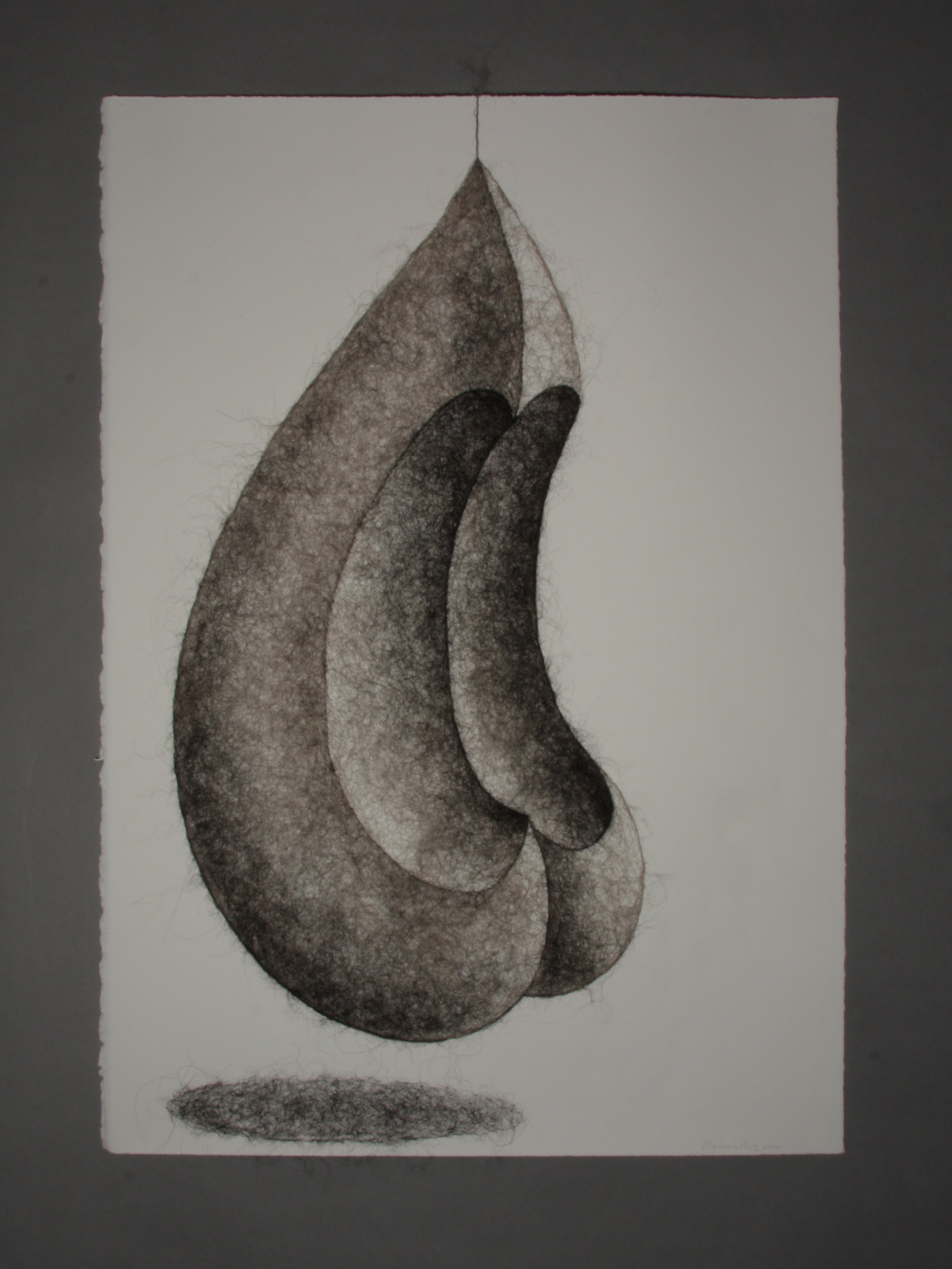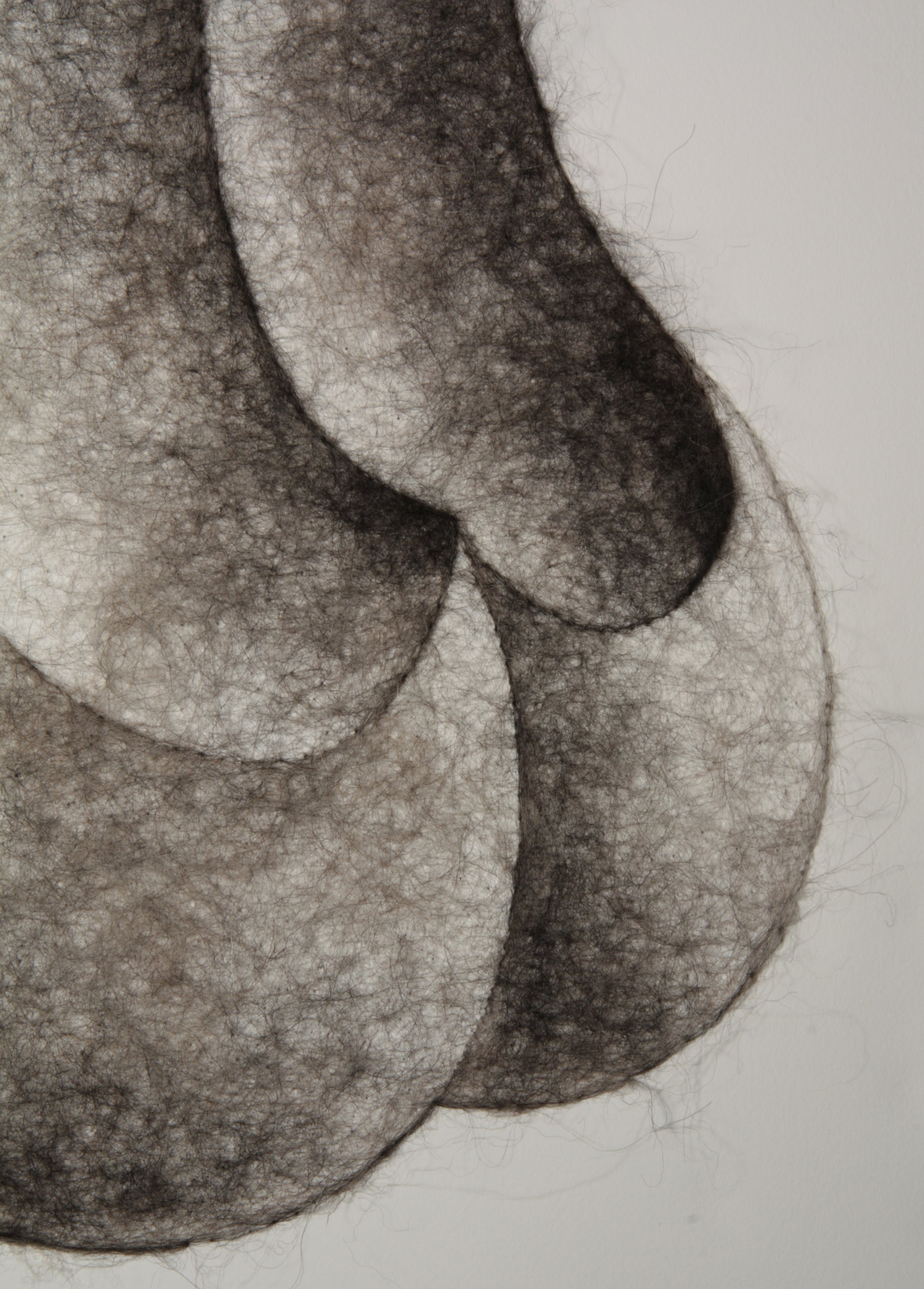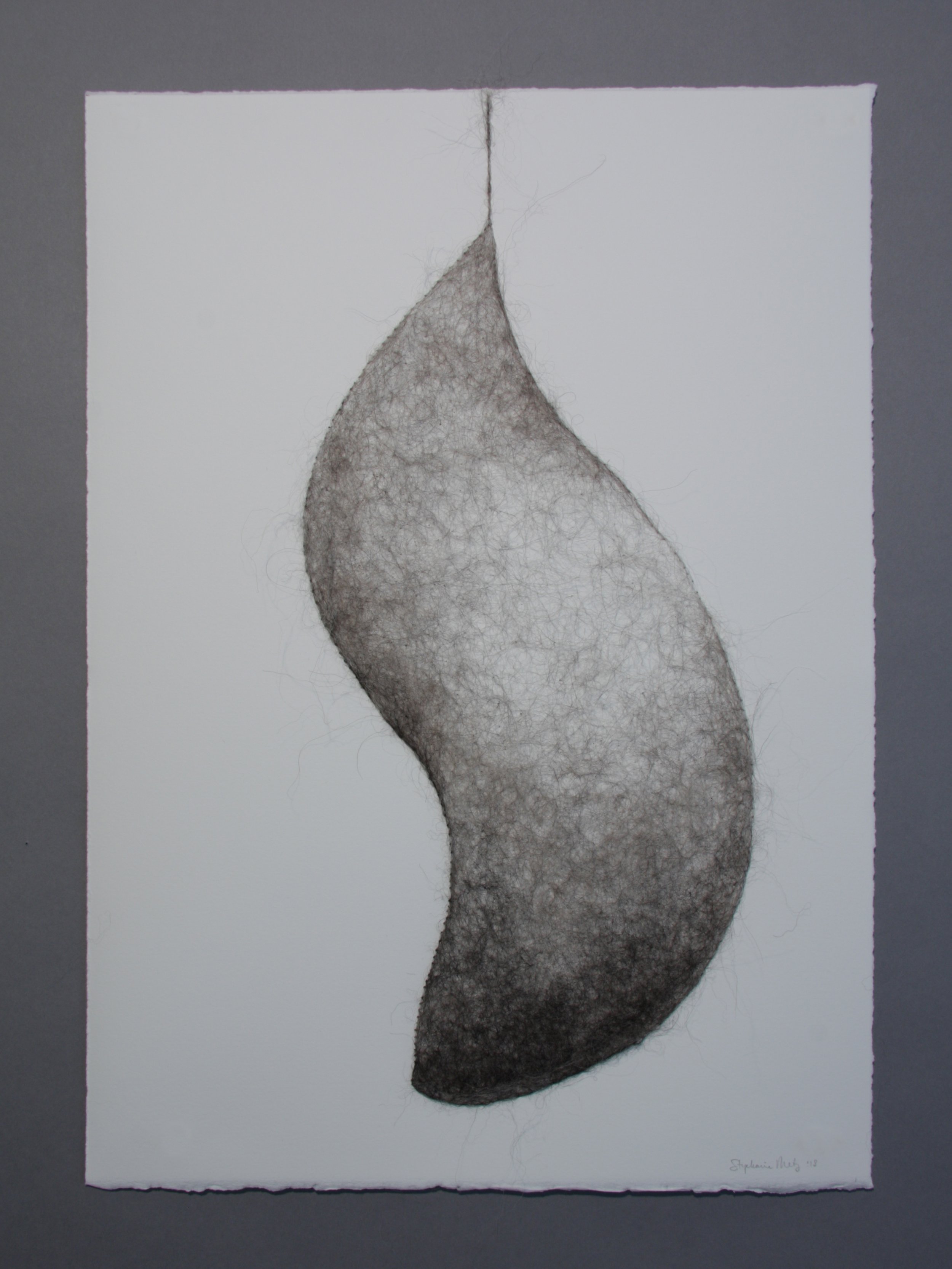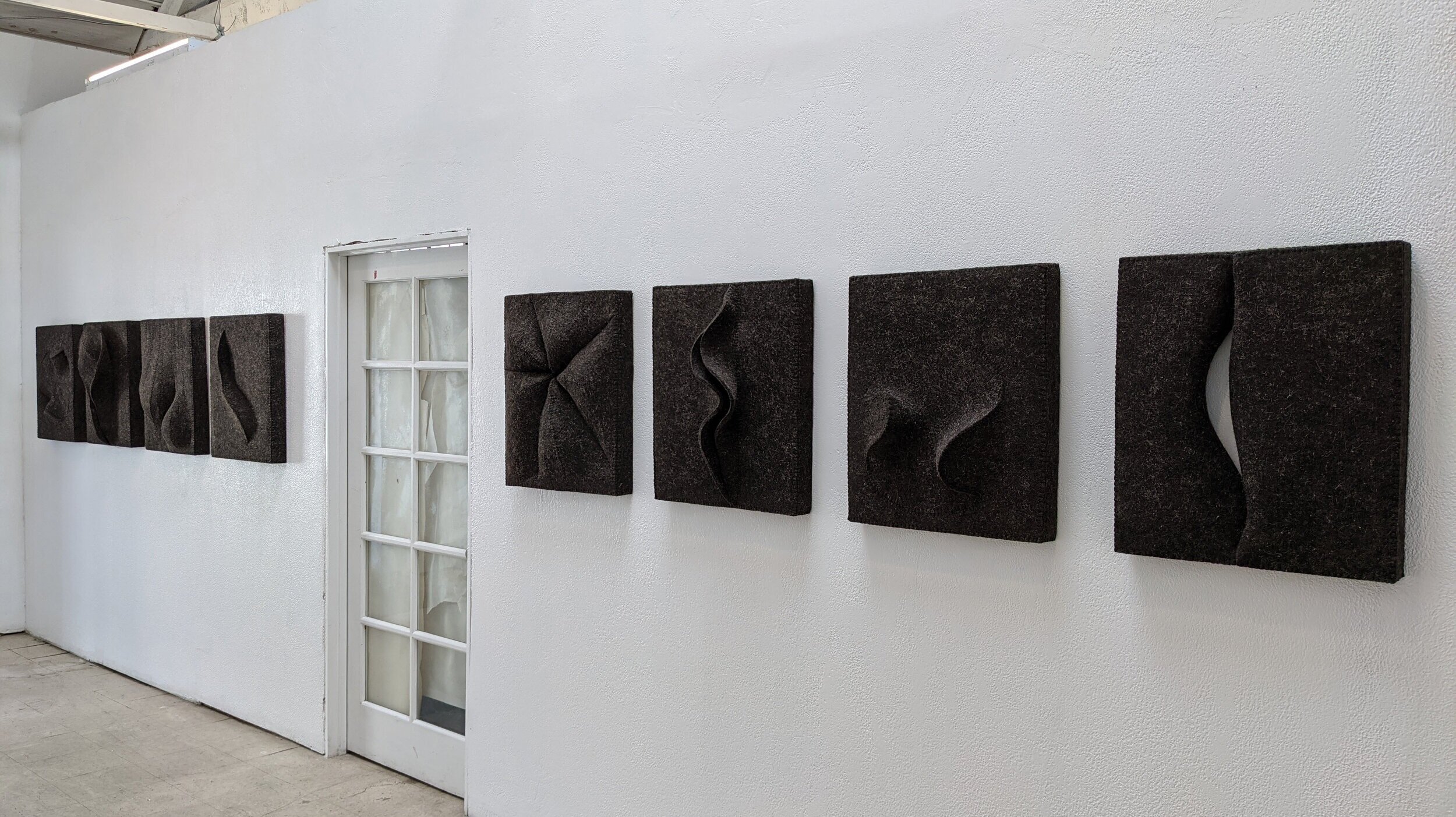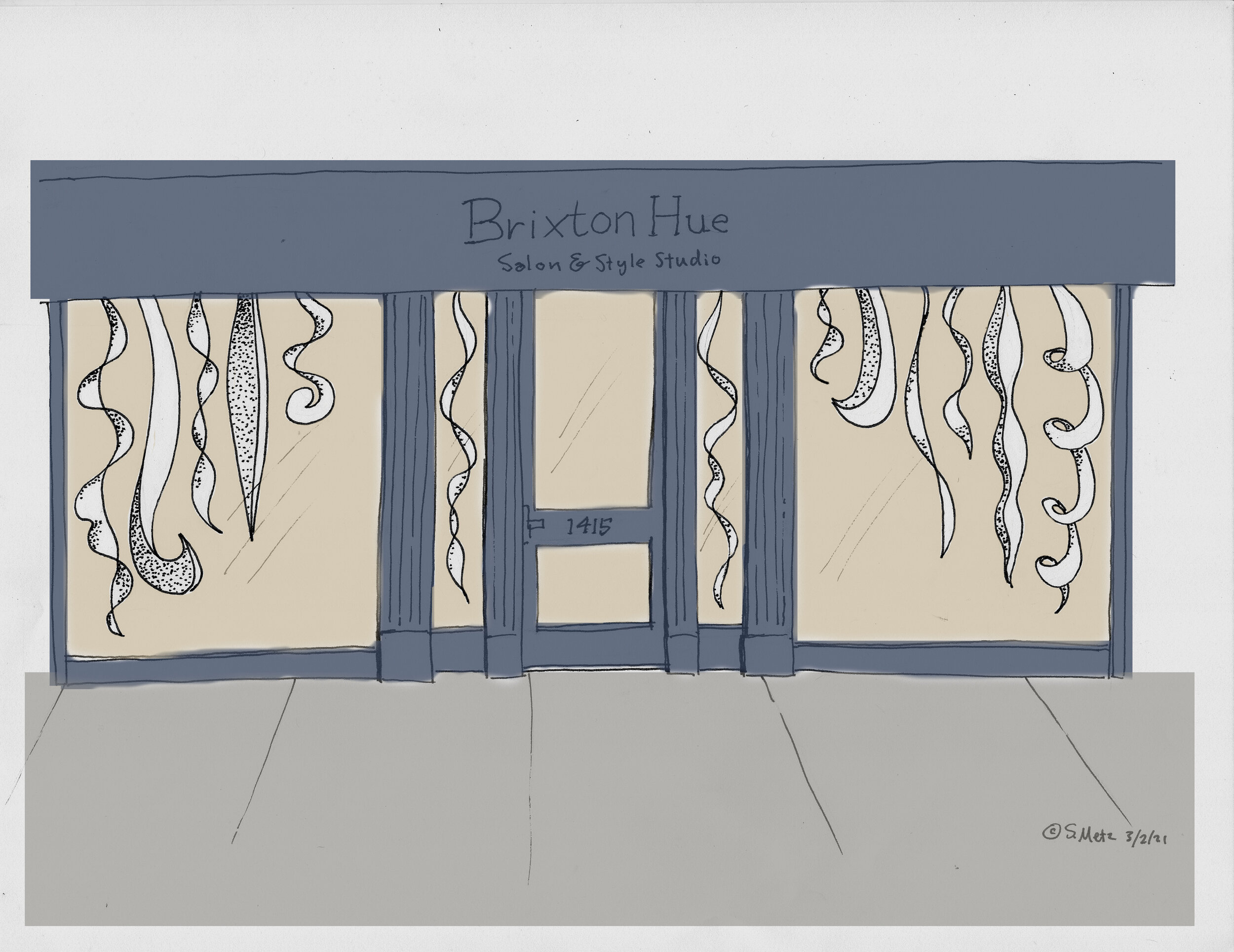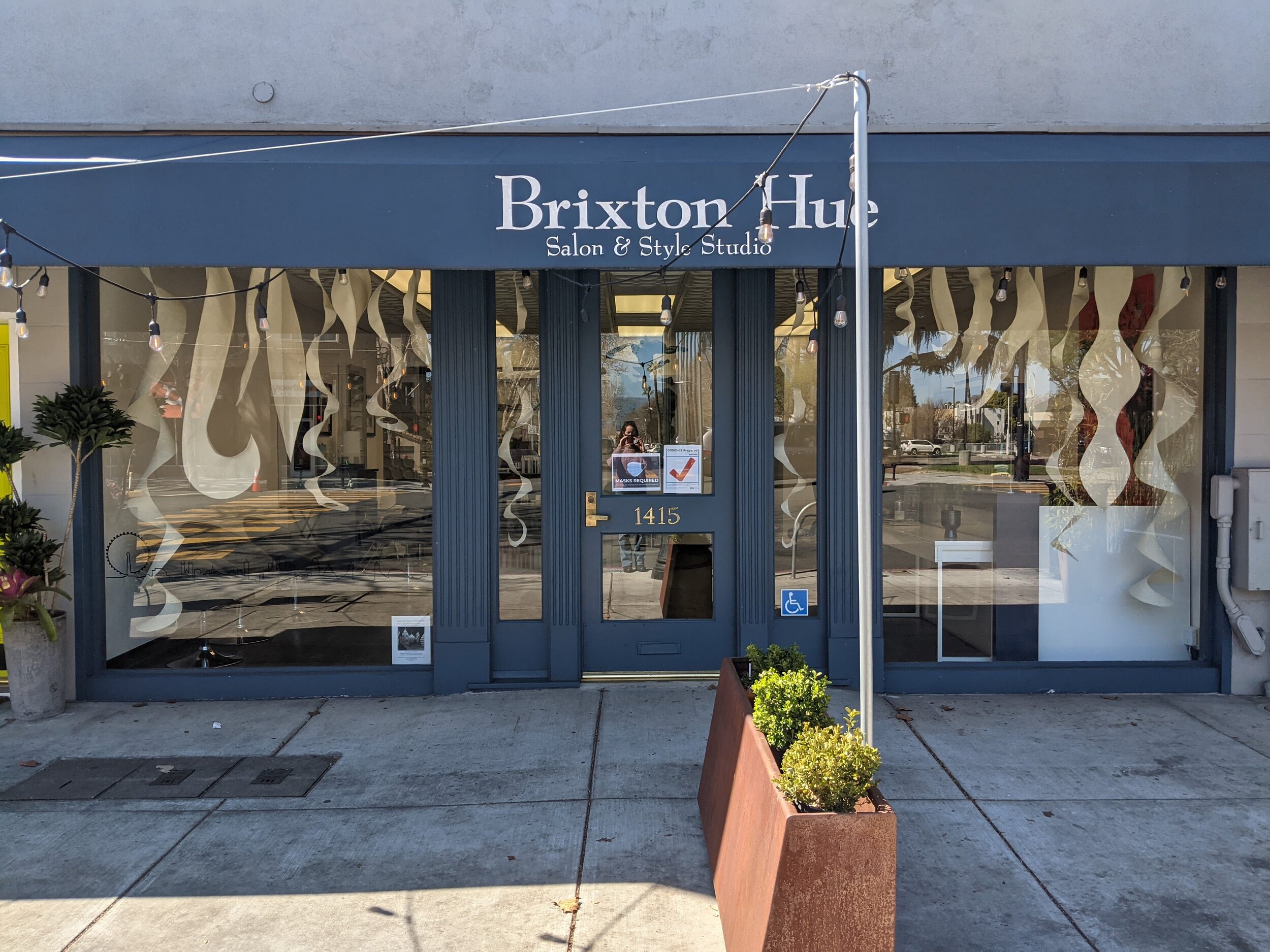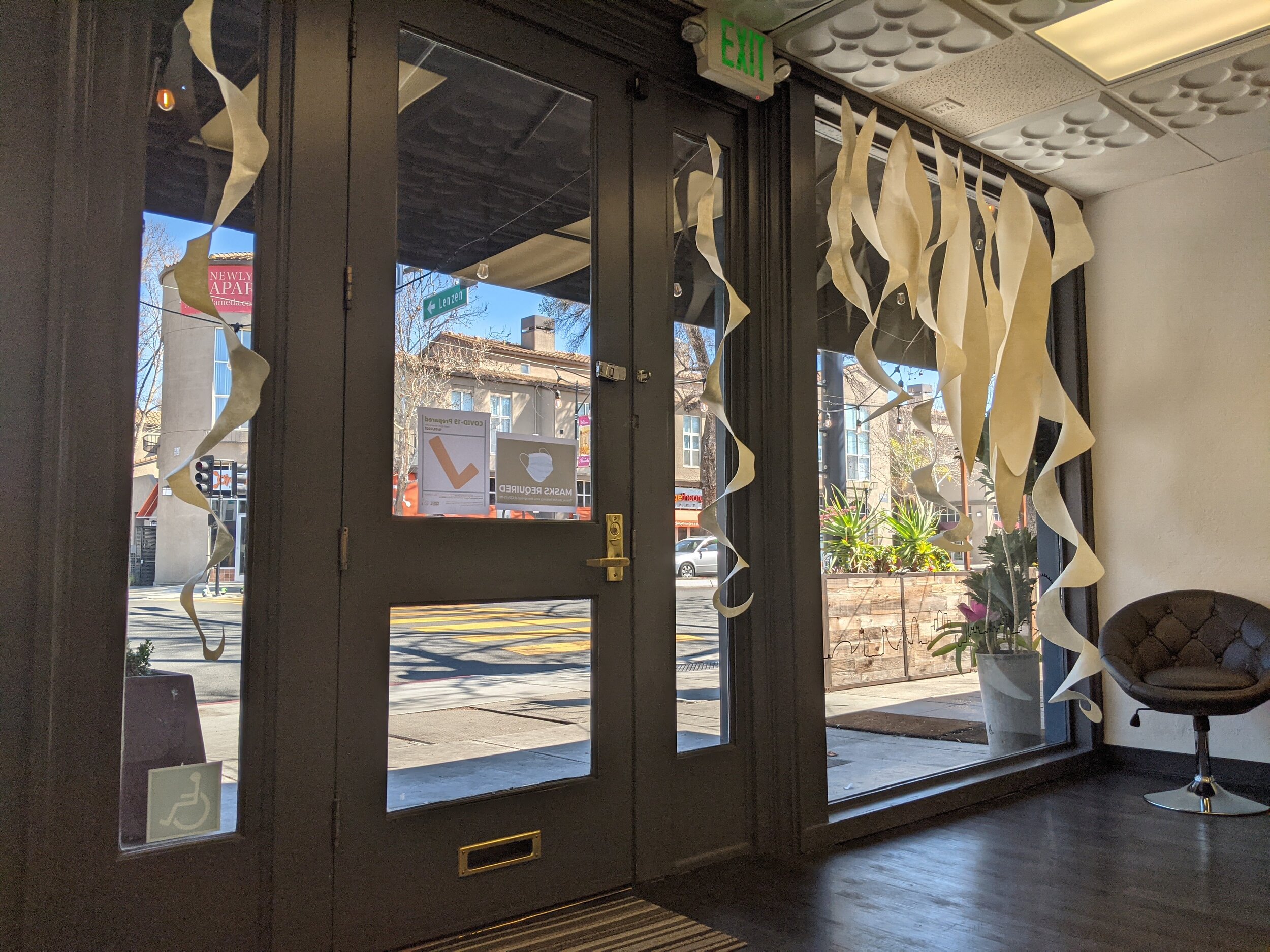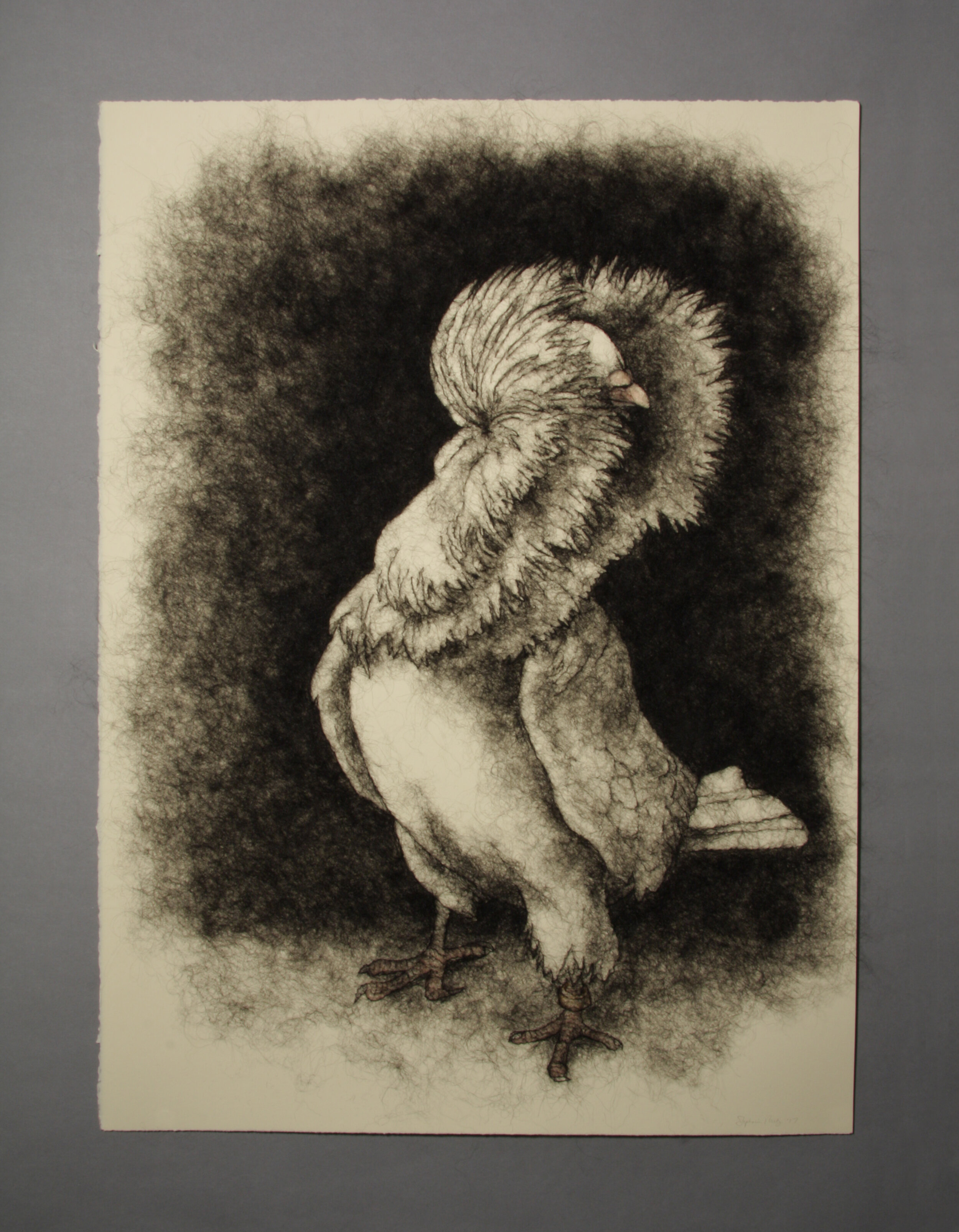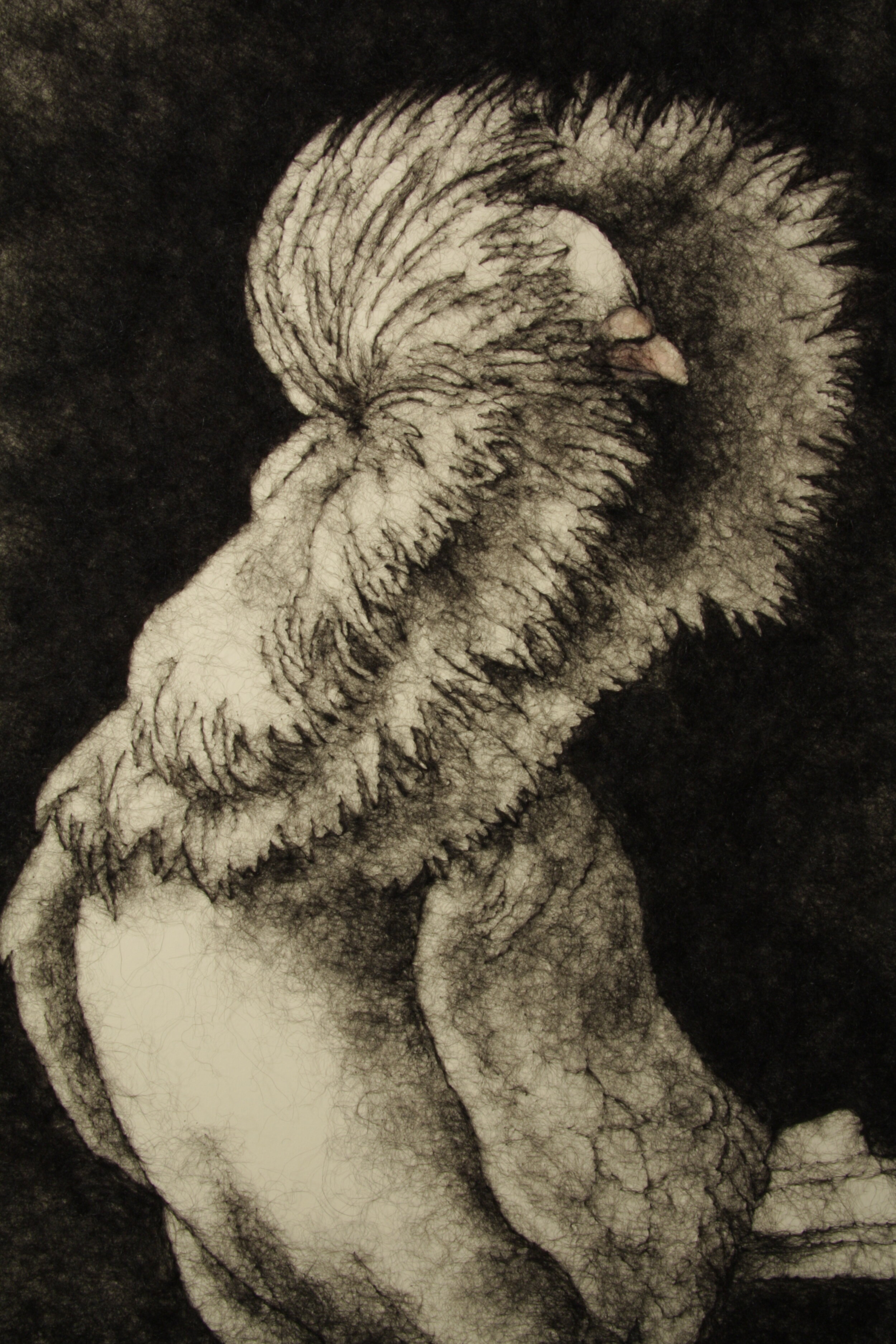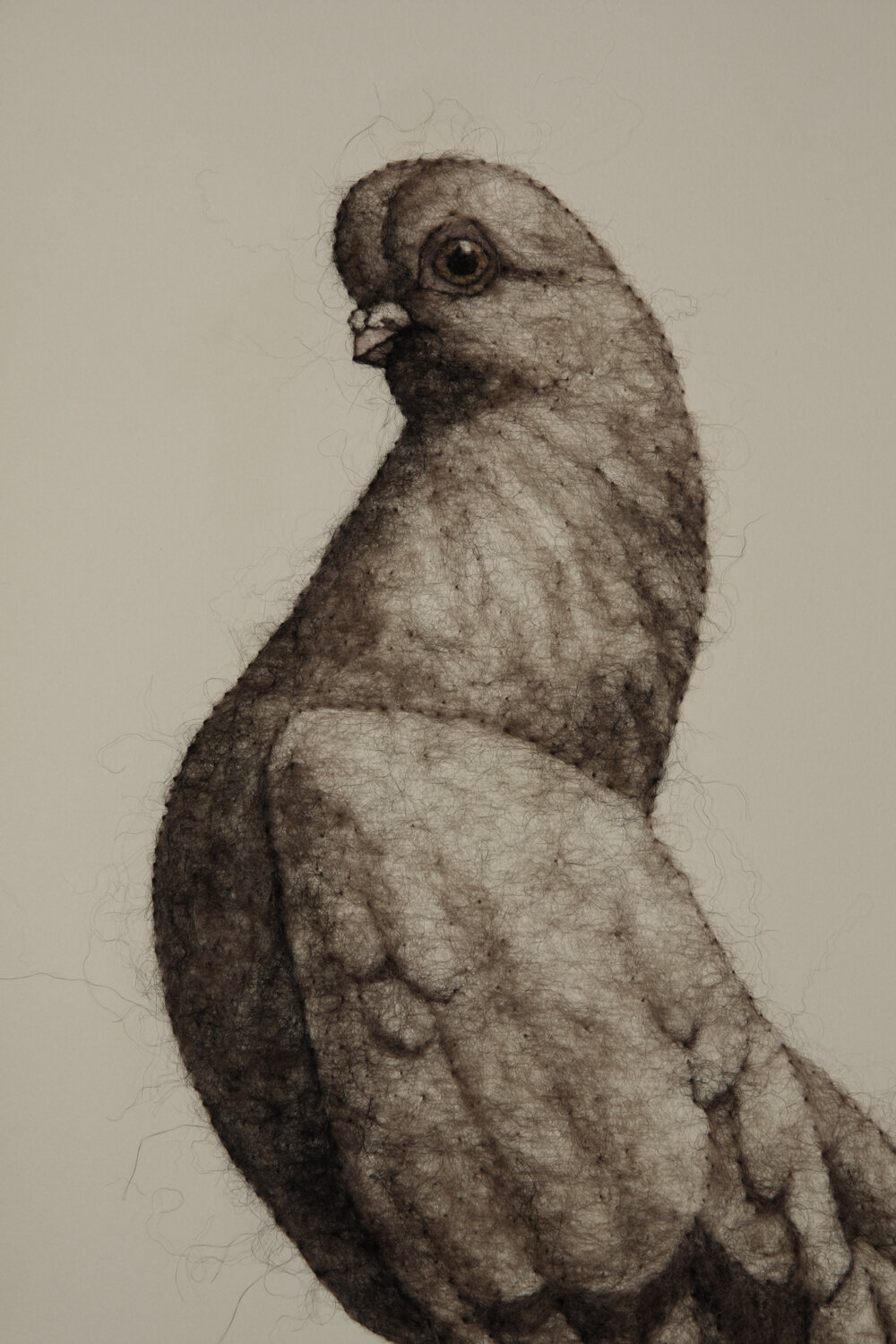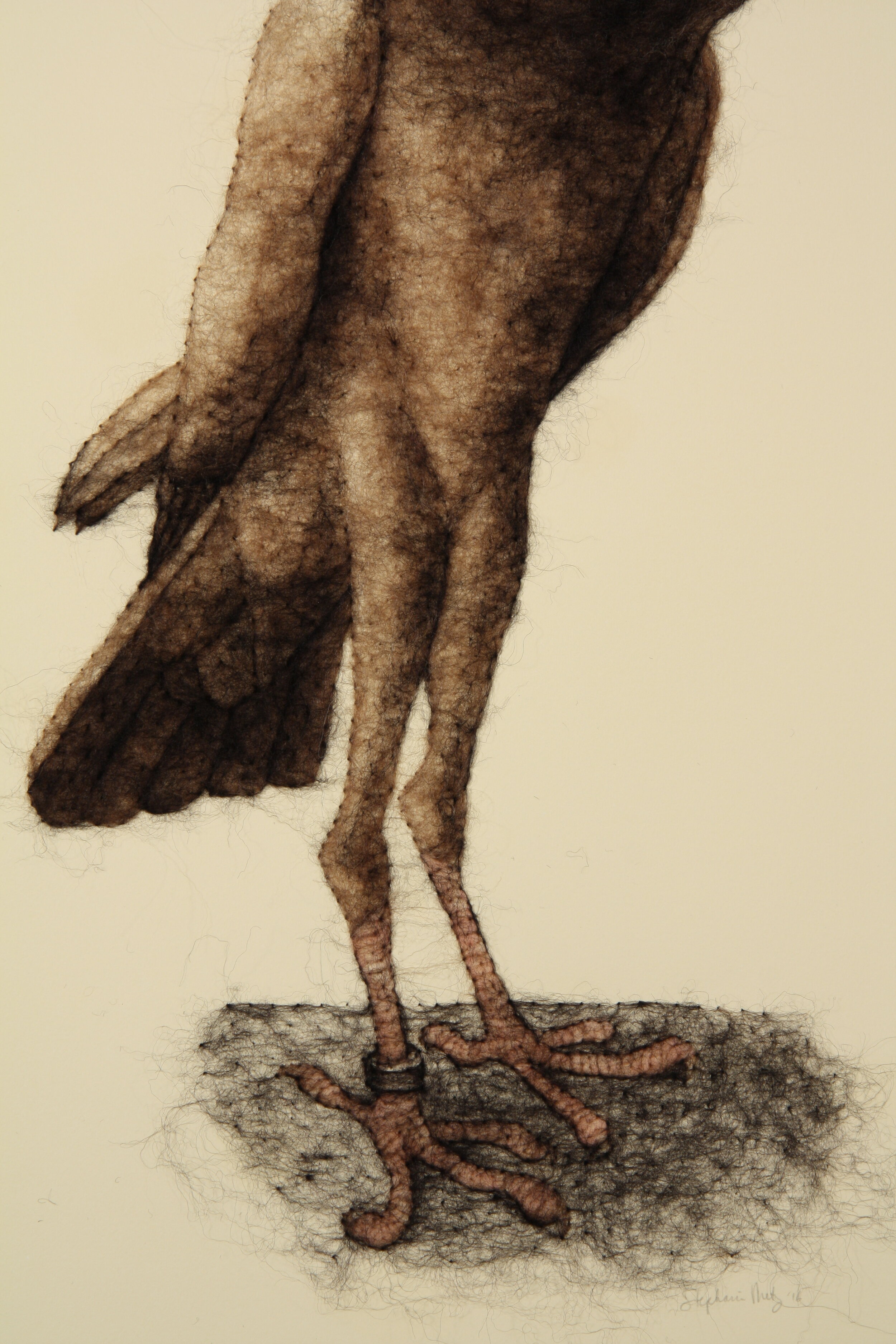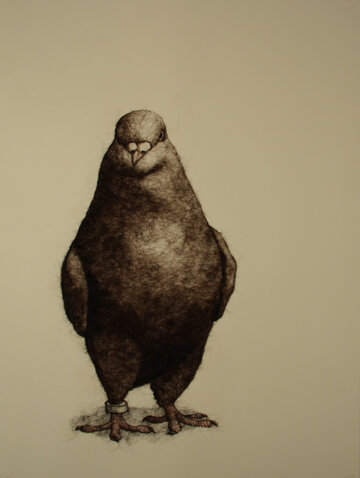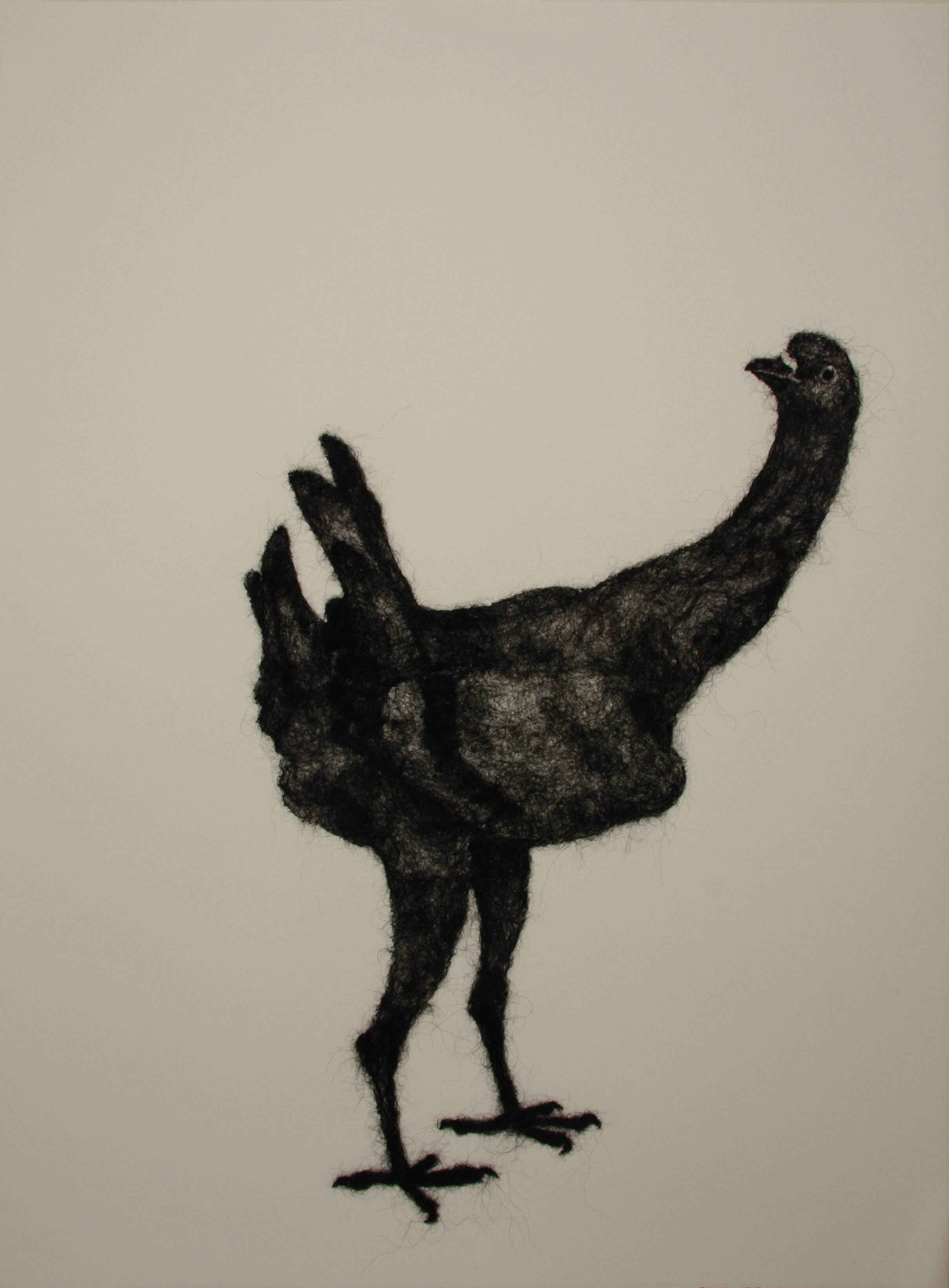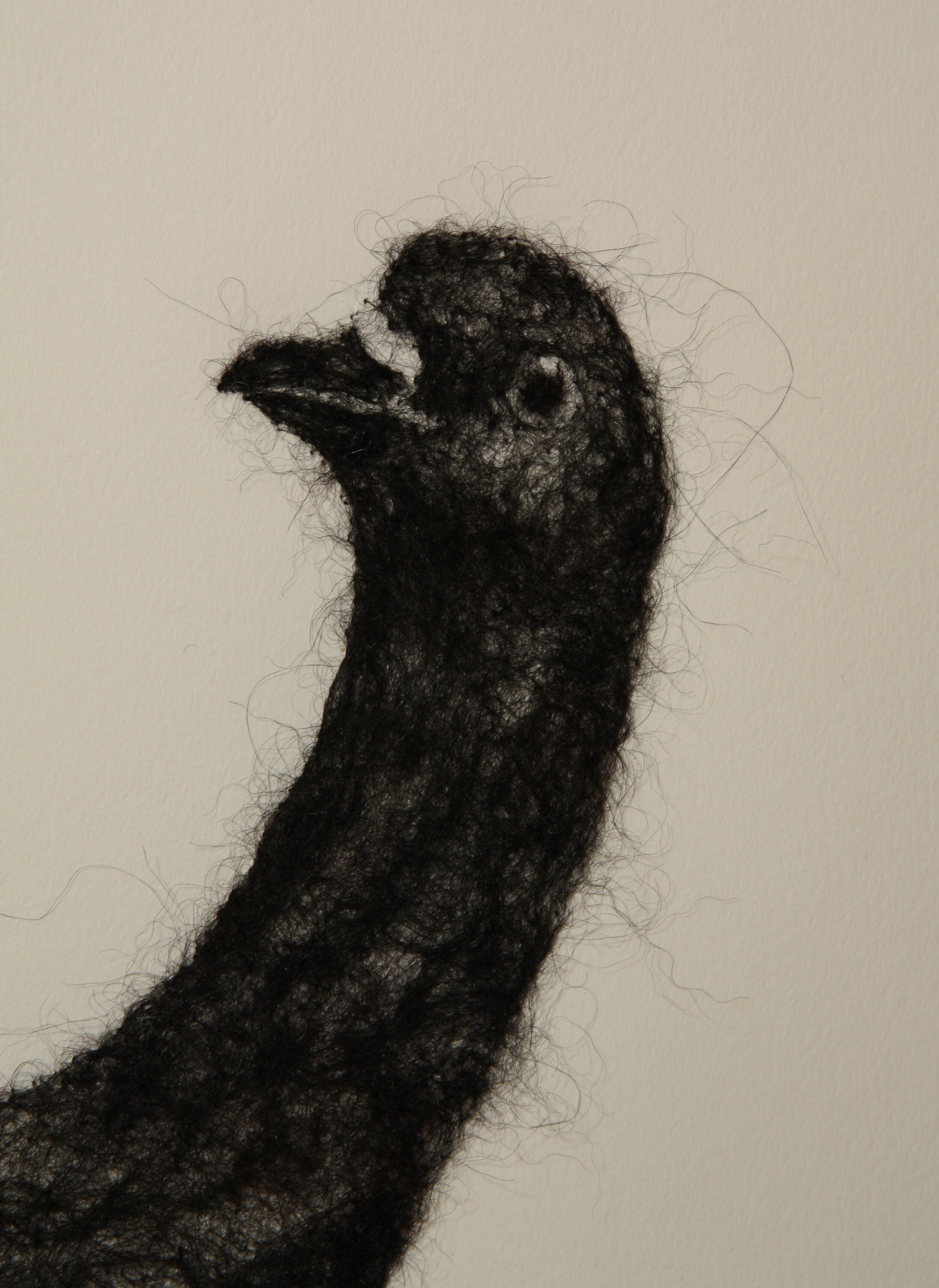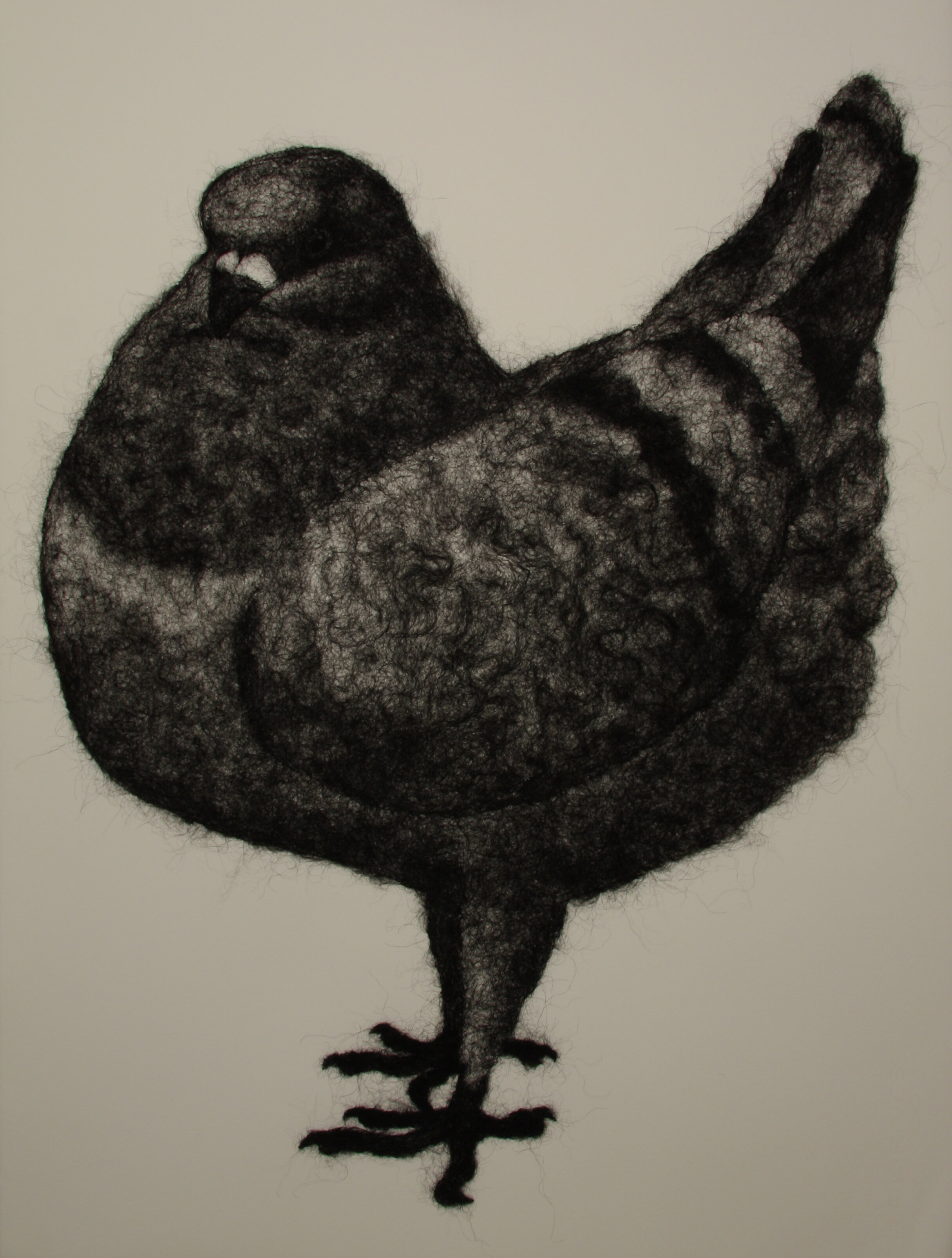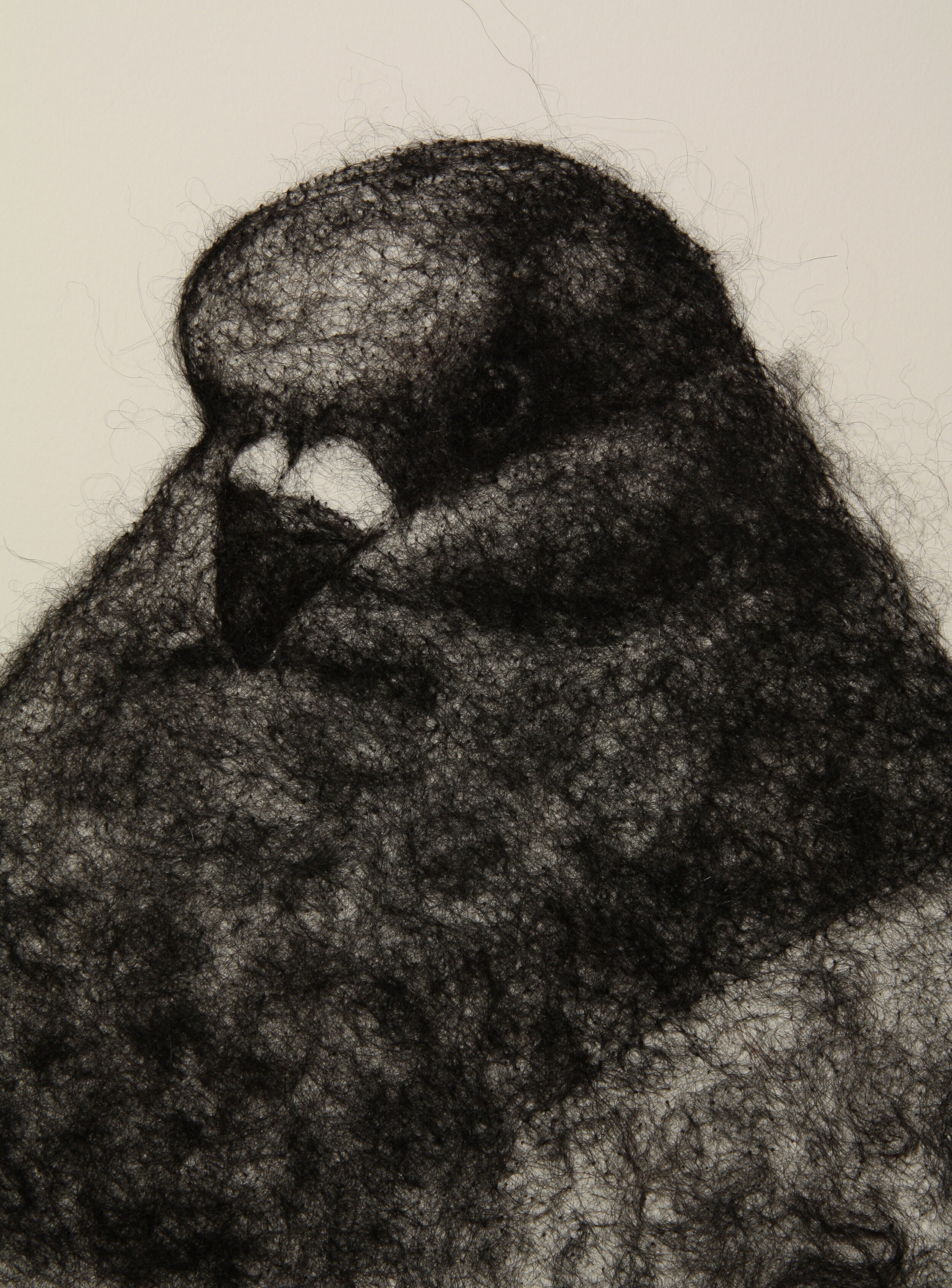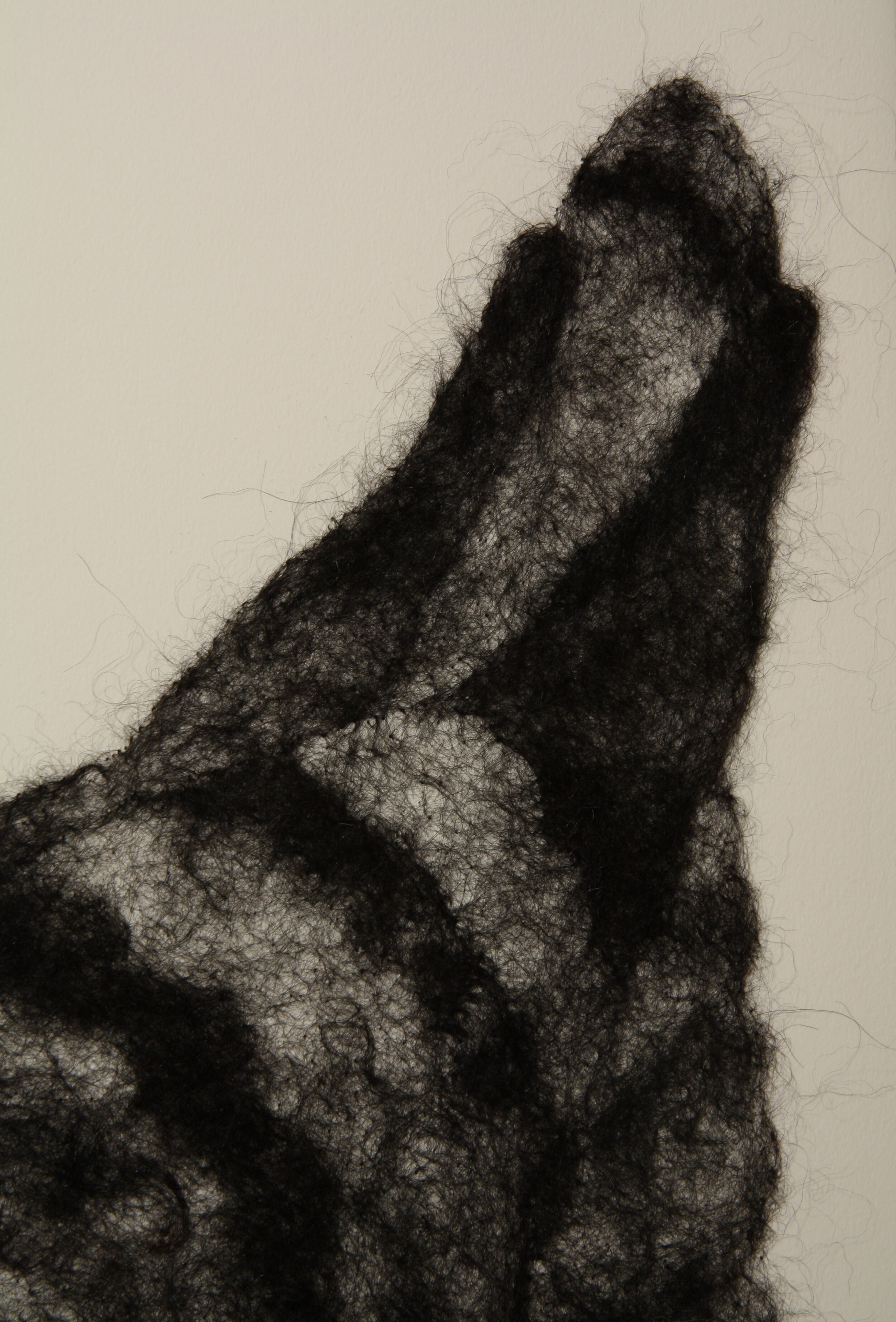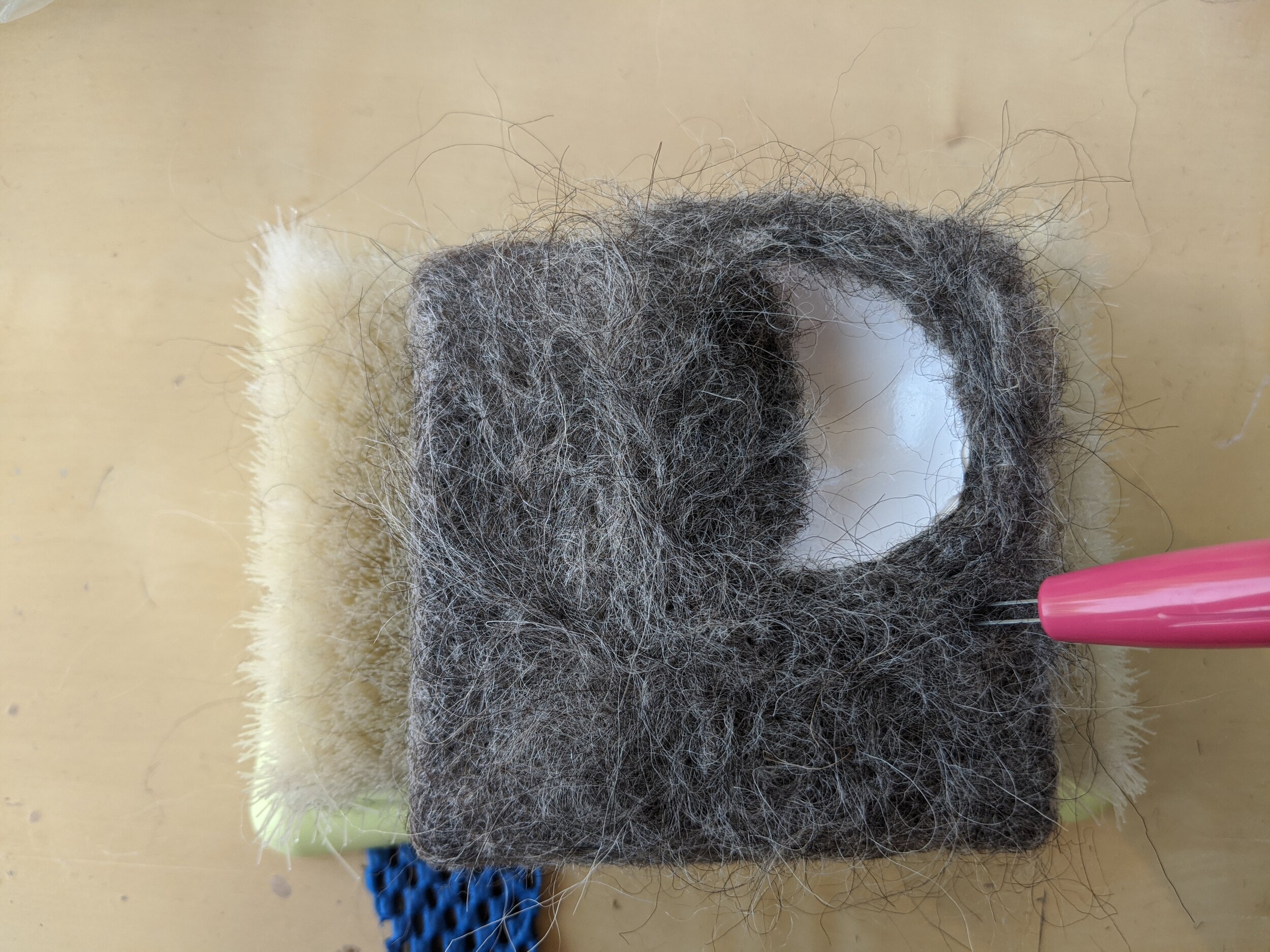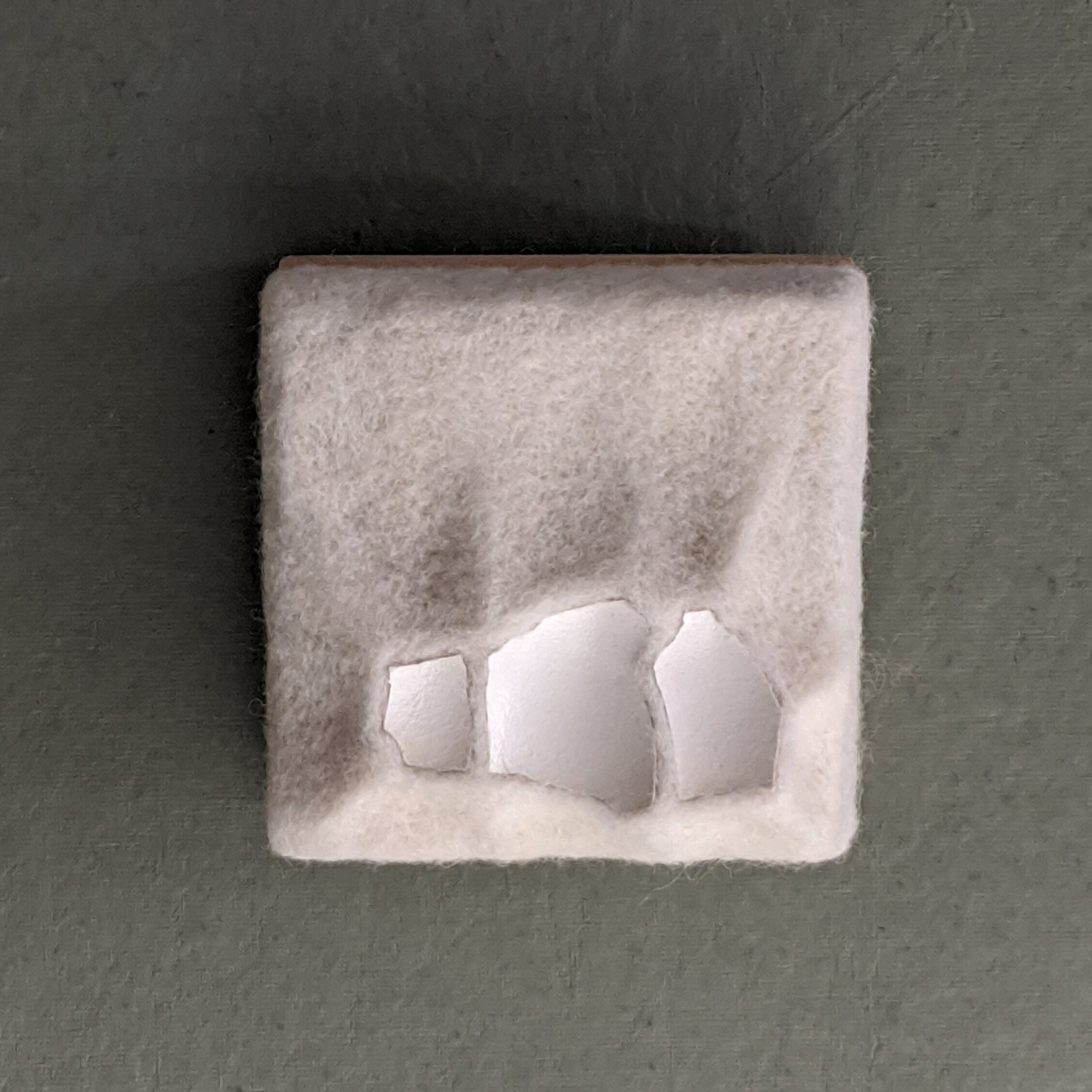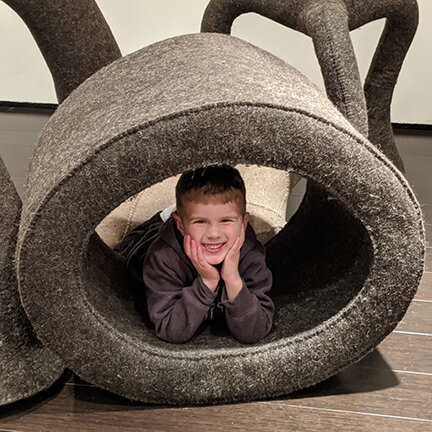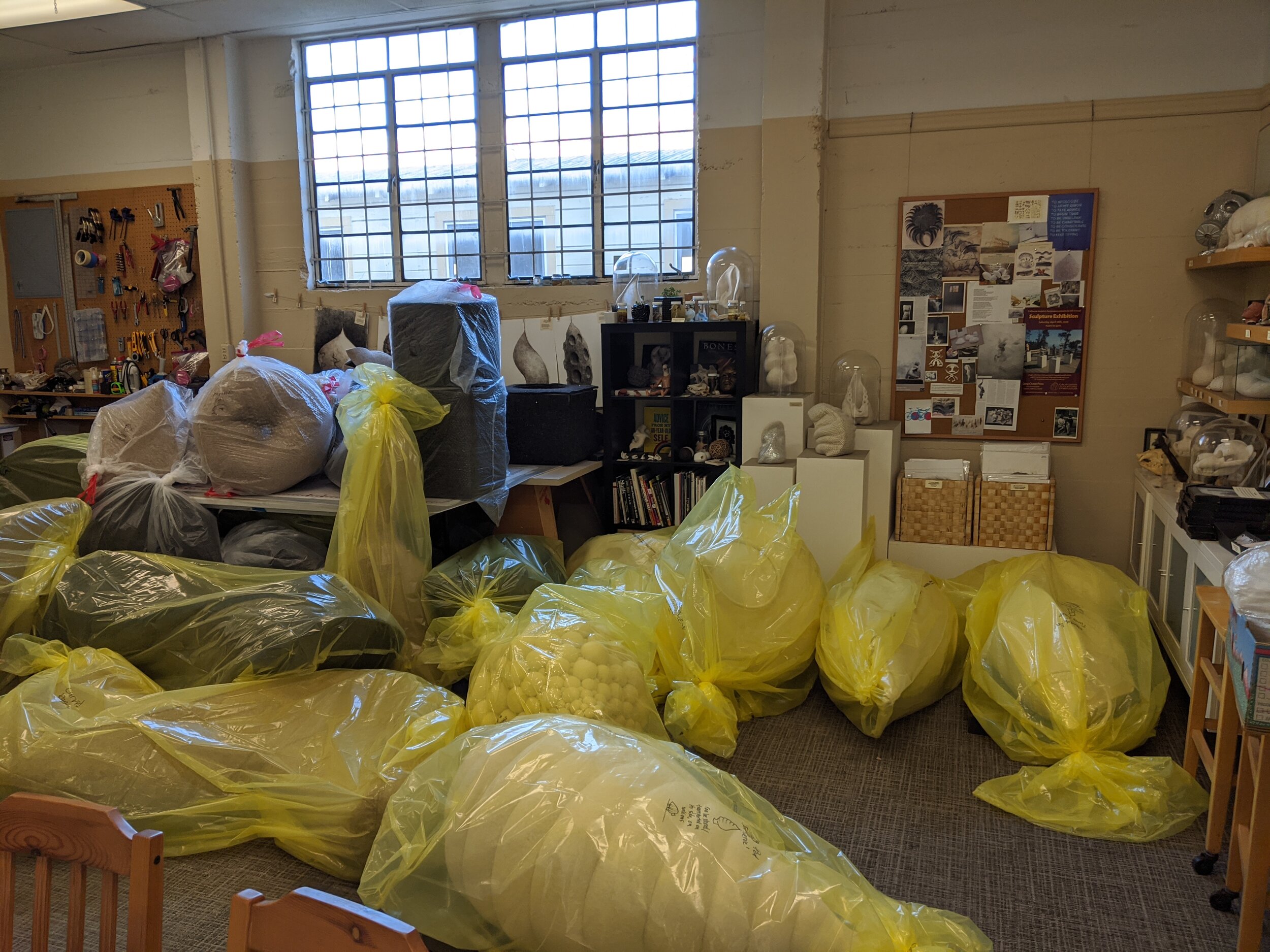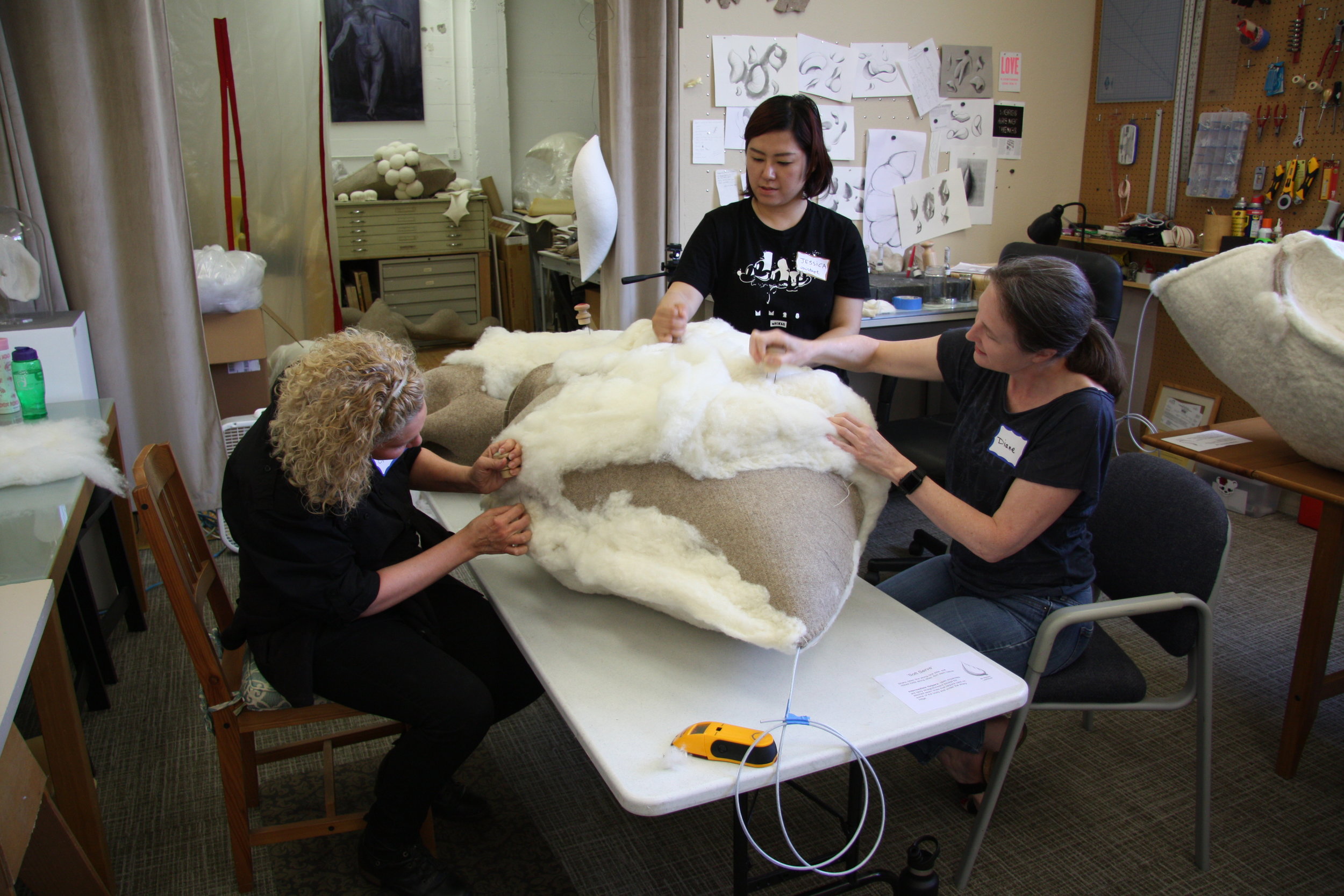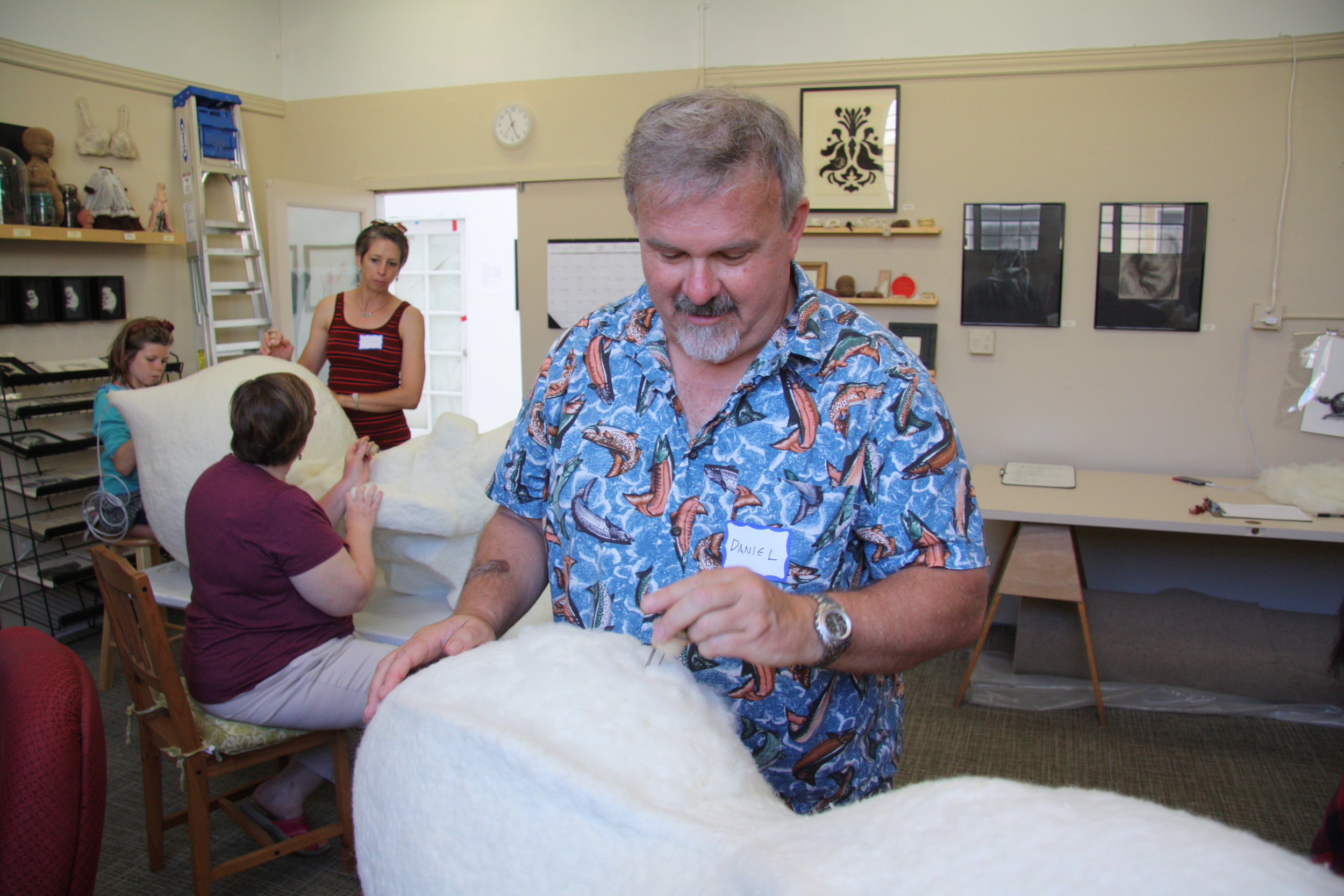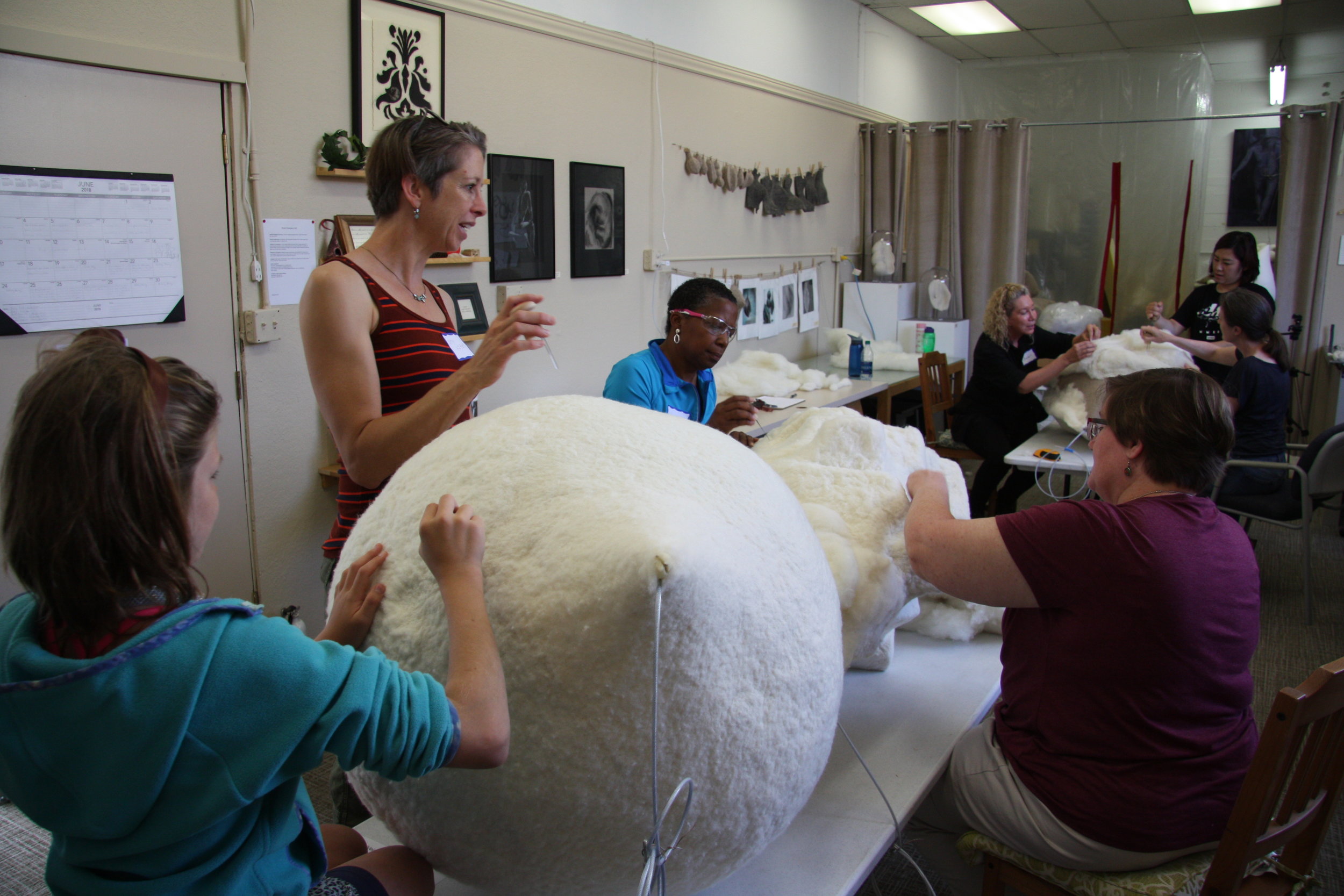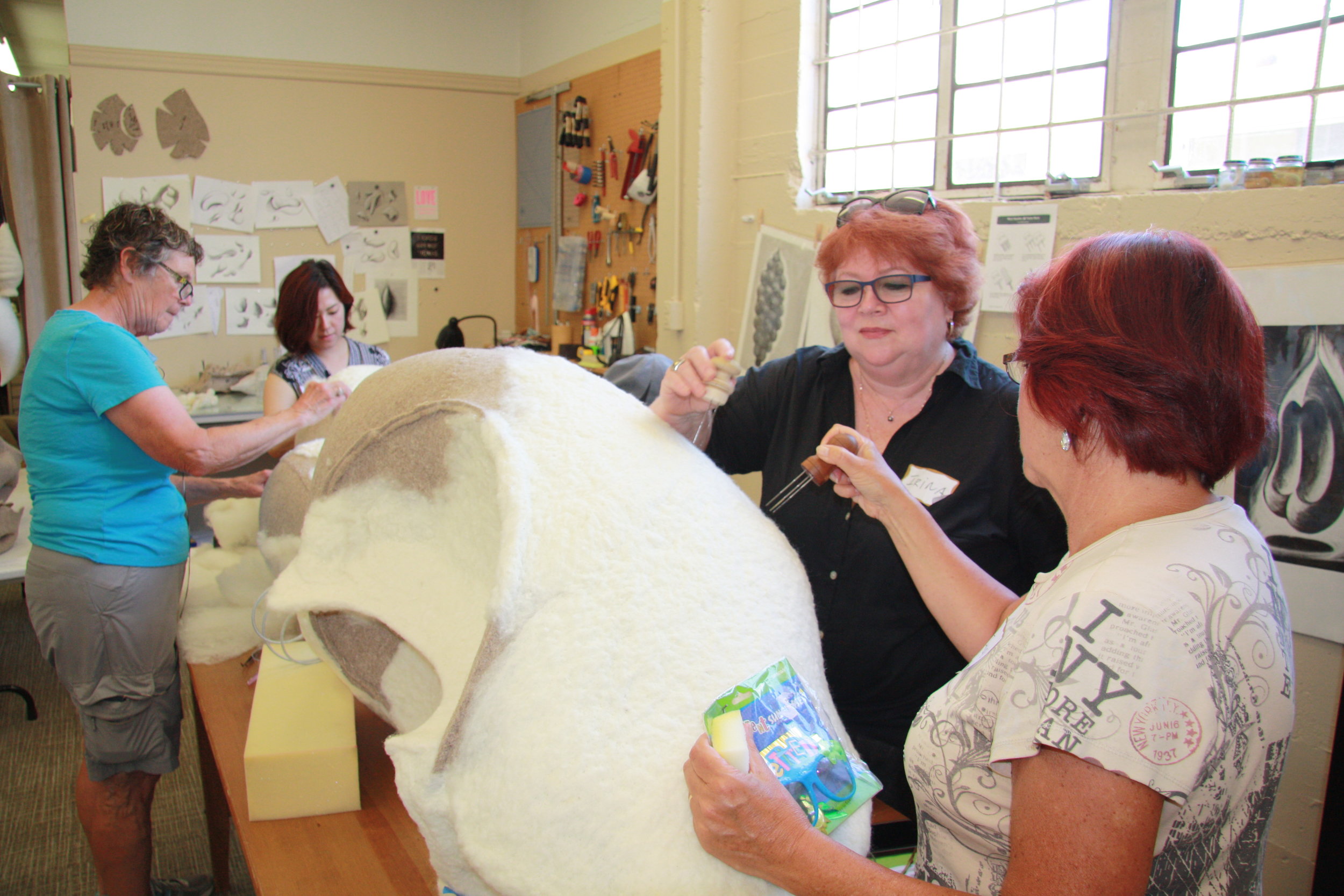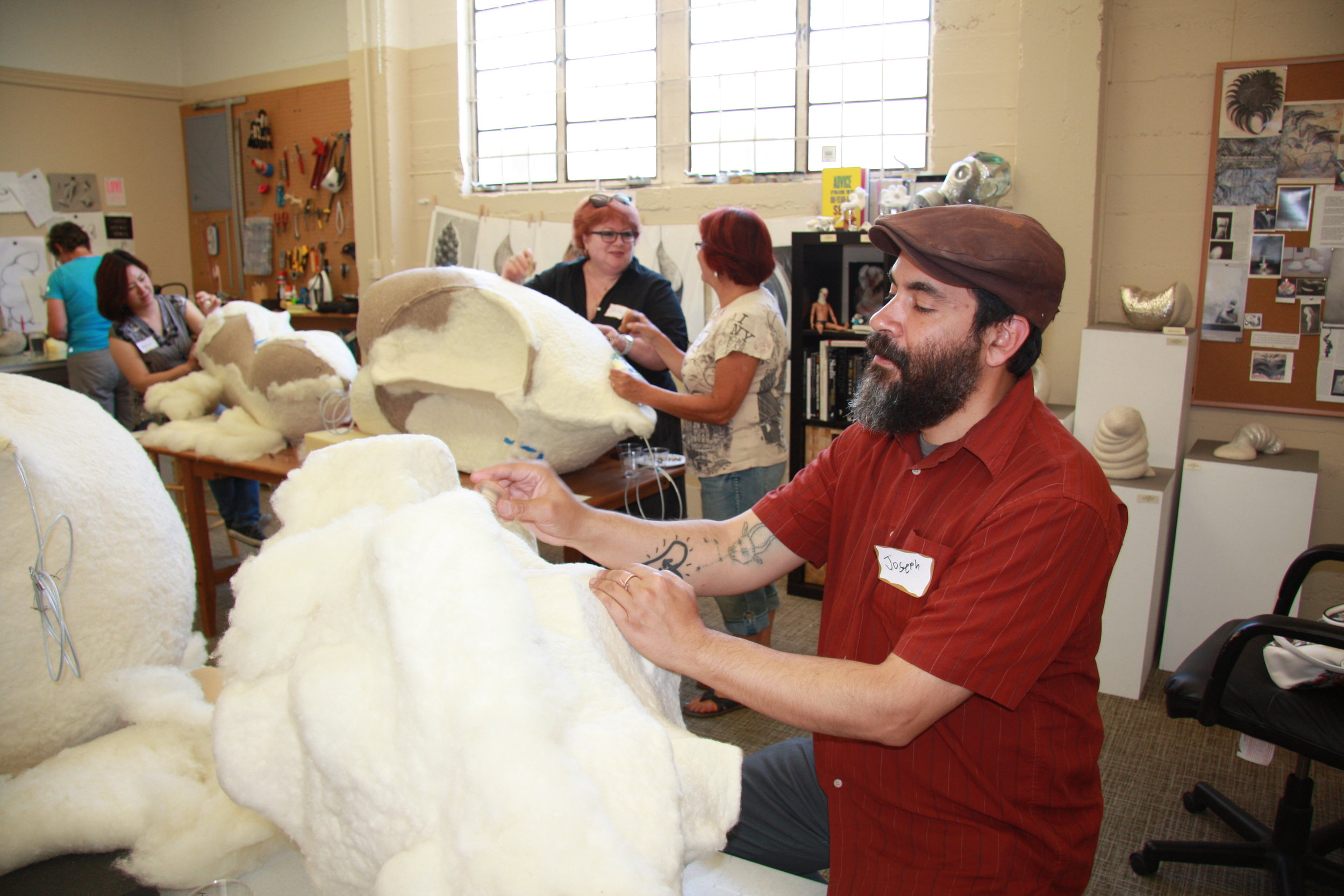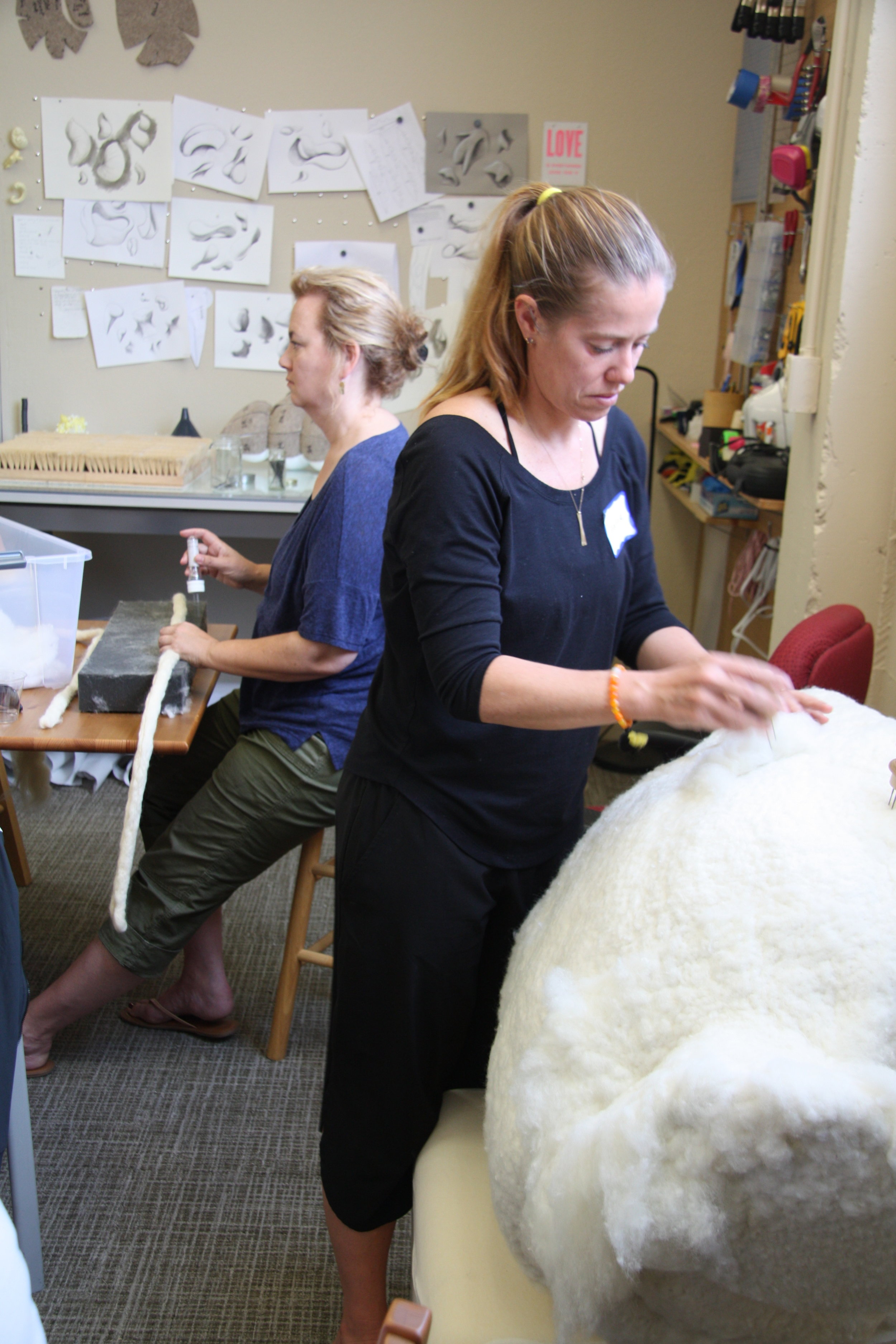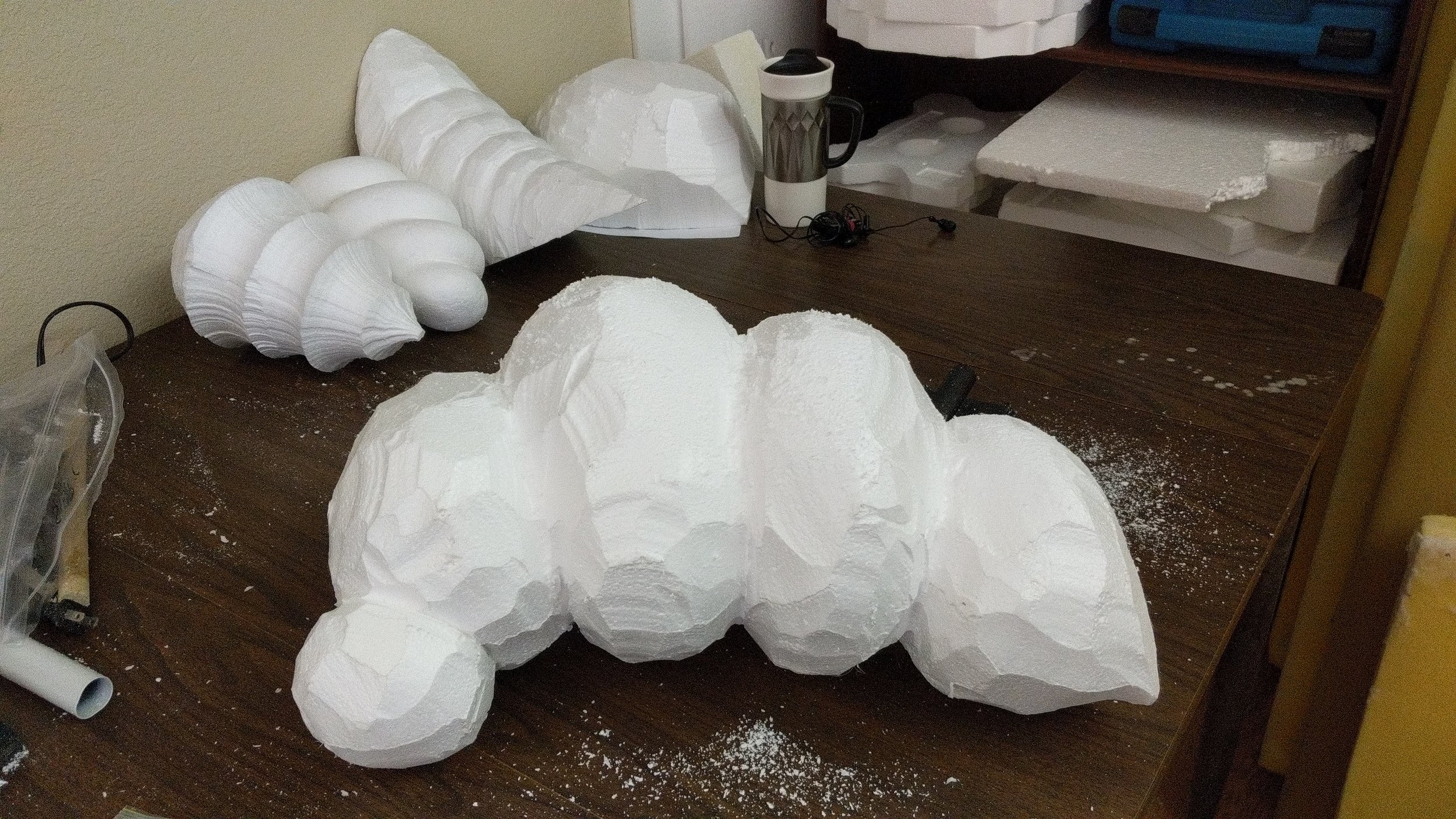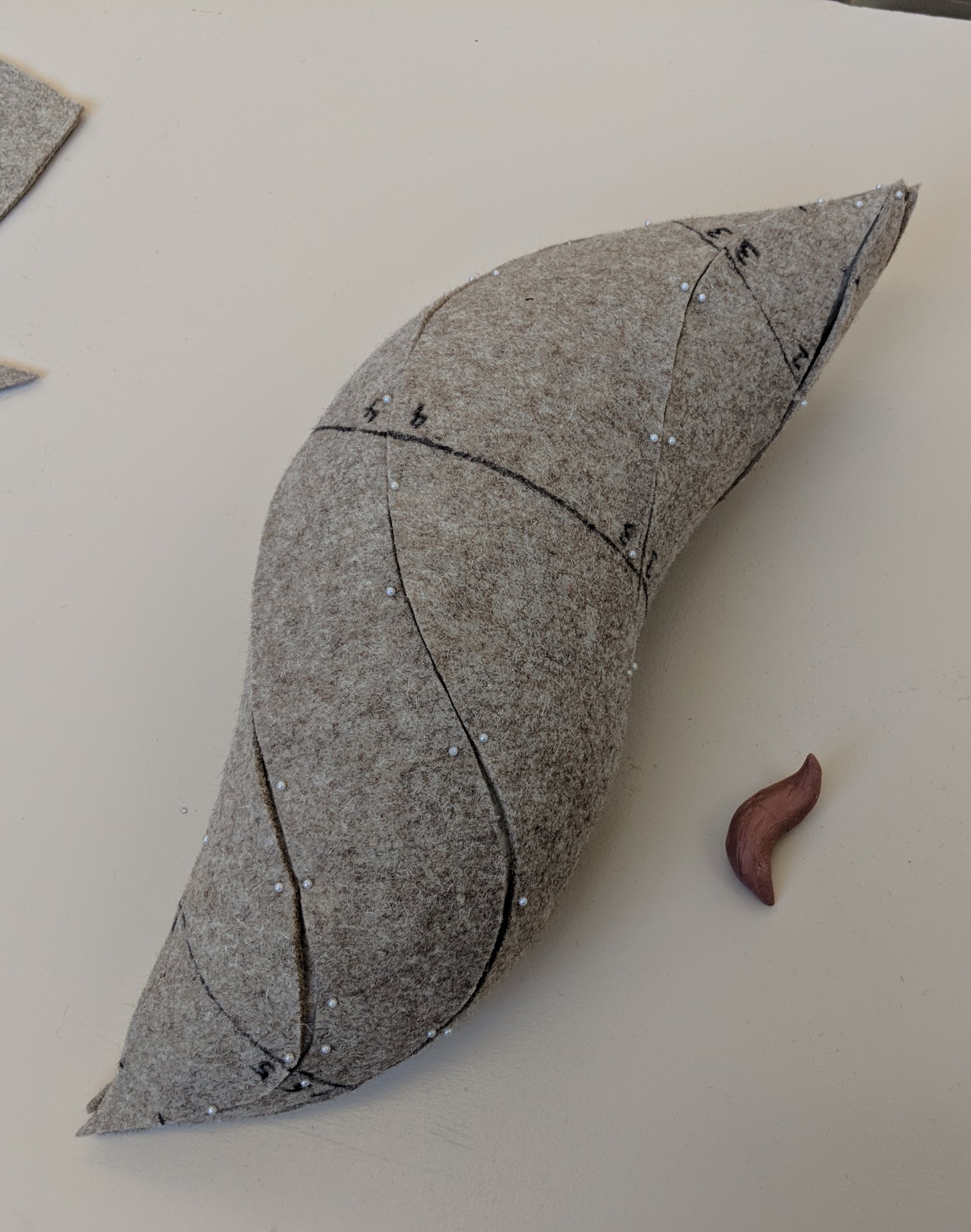Holiday Boutique Preview:
Looking at the variety of two-dimensional work currently hanging in the hallway of my building, I’m struck by how varied the pieces are and yet how much they are very recognizably ME. In charcoal drawings, prints, wool drawings, wall sculptures, and even- gasp- paintings, you’ll see the themes that recur in my work. And if you, too, find yourself drawn to weird takes on living creatures, anatomical details, the comfort of solid forms in space, and visible and tactile softness with an edge, then this is the art to grace your walls. Here’s a quick rundown on the bodies of work, from old to new:
Fossil Paintings (2003):
These paintings predate my work in wool, yet the themes of transformation, hybrids, fanciful anatomy, and bones as form and function were present. The highly textured canvas is almost like a fossil bed, with darker pigment emphasizing the sculptural surface overlaid with washes of dreamy silhouettes. I see fossils as catalysts for storytelling— what humans tell ourselves about life from the past, and how that evolves and reveals changing perspectives on the present. In another life I may have gone into paleontology; I love the process of extrapolating a whole picture from fragments of evidence- and illustrating the conceptual space between hard, broken bones and the fluid elegance of sinuous living creatures.
Damask Bird Wool Drawings (2007):
These were my earliest experiments with pushing wool through paper; their design comes from my memories of flocked, textured wallpaper in which I’d imagine I saw recognizable shapes of animals and faces. This seemed like a good marriage of concept and medium. I love that they appear at first to just be decorative, bold patterns- but as you pay attention you see the bird forms, and notice the texture of the wool itself.
Charcoal Drawings (2015):
For me drawing has always been a way to work out and understand sculptural forms; charcoal is a good medium for expressing solidity by marrying shadows and line work. These feel so luscious and full to me.
Bone Wool Drawings (2016):
Studies of very hard things rendered in the softest medium possible, these drawings came about after a trip to the natural history museum
Flesh and Bone Wool Drawings (2016):
Using wool to create more fully three-dimensional-appearing works, I took the same approach of combining imagined soft and hard bits and pieces from anatomical specimens to create full, detailed, stand-alone forms.
Extreme Pigeon Wool Drawings (2016):
Believe it or not, these are fairly realistic portraits of actual ‘fancy’ pigeon breeds, whose attributes were chosen for looks (or occasionally for function). I love the deliciously weird form of these birds, and how they pose for and peer out at the viewer.
InTouch Hanging Pod Wool Drawings (2018):
These were studies for planned touchable sculptures; I’m very pleased with how well they helped me visualize and realize the actual human-sized forms.
I do hope you get a chance to see and compare these in person. Besides occasional open studio days and sales, I can often arrange in-person visits to my downtown San Jose studio.

